Aphrodite
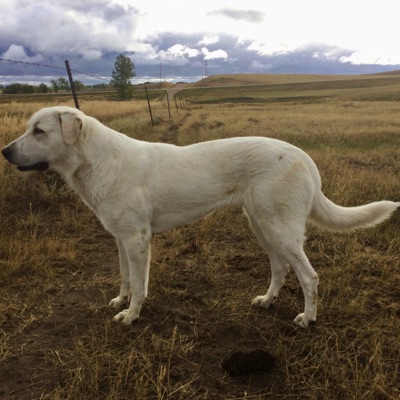
The Greek goddess of love, beauty, pleasure, and procreation.
Farm jobs: Guardian of all livestock, fast and clever, very close relationship with our goats.
Our Livestock Guardian Dogs
We get a lot of questions and comments about our livestock guardian dogs (LGDs), so we thought we would share some information about them. We don’t breed our dogs, and we don’t have any dogs for sale. We have three dogs on the farm. They are siblings from a nearby cattle and sheep ranch (near Belle Fourche, SD).
Meet Our Livestock Guardian Dogs...

The Greek goddess of love, beauty, pleasure, and procreation.
Farm jobs: Guardian of all livestock, fast and clever, very close relationship with our goats.

The Greek goddess of wisdom, courage, inspiration, civilization, law and justice, mathematics, strength, war strategy, arts & crafts, and skill.
Farm jobs: Guardian of all livestock, very loving, independent, very caring, and tender with baby lambs.
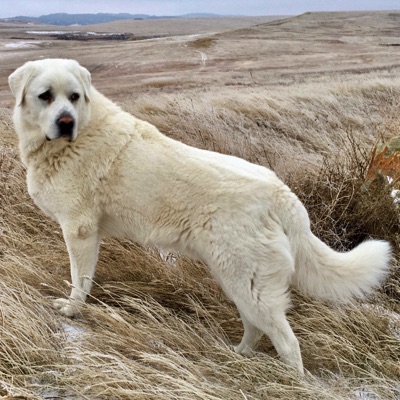
The Greek god of the grape harvest, winemaking & wine, ritual madness, fertility, theatre, and religious ecstasy.
Farm jobs: Guardian of all livestock, most protective of the farm, very muscular and powerful, reserved.
Breed
These LGDs are an intentional three-way mix of:
We were told this three-way mix of these three breeds was developed on the great cattle ranches in Montana (hundreds or even thousands of acres). They started with the Great Pyrenees and Maremma, both excellent livestock guardian dog breeds, but the ranchers still needed to feed the dogs when on pasture for months at a time. They added the Akbash to make the dog lighter, faster, more athletic, and more aggressive. The result is a dog capable of livestock guardian duties but fast enough to catch much of its food (e.g., rabbits, gophers, etc.).
Duties
At Bear Butte Gardens, these LGDs protect our sheep, goats, and poultry - mainly from coyotes. Before we got these dogs, we had issues with coyotes. The coyotes would come up very near our house at night. Since we have these dogs, the coyotes don't come near.
The LGDs are also well acquainted with cattle but have not had guarding duty yet -- because the cattle we've had have been large enough and old enough to take care of themselves. In the future, we plan to expand our cattle operation and have our newborn calves. At that time, we are hopeful that these LGDs will help guard the calves as well.
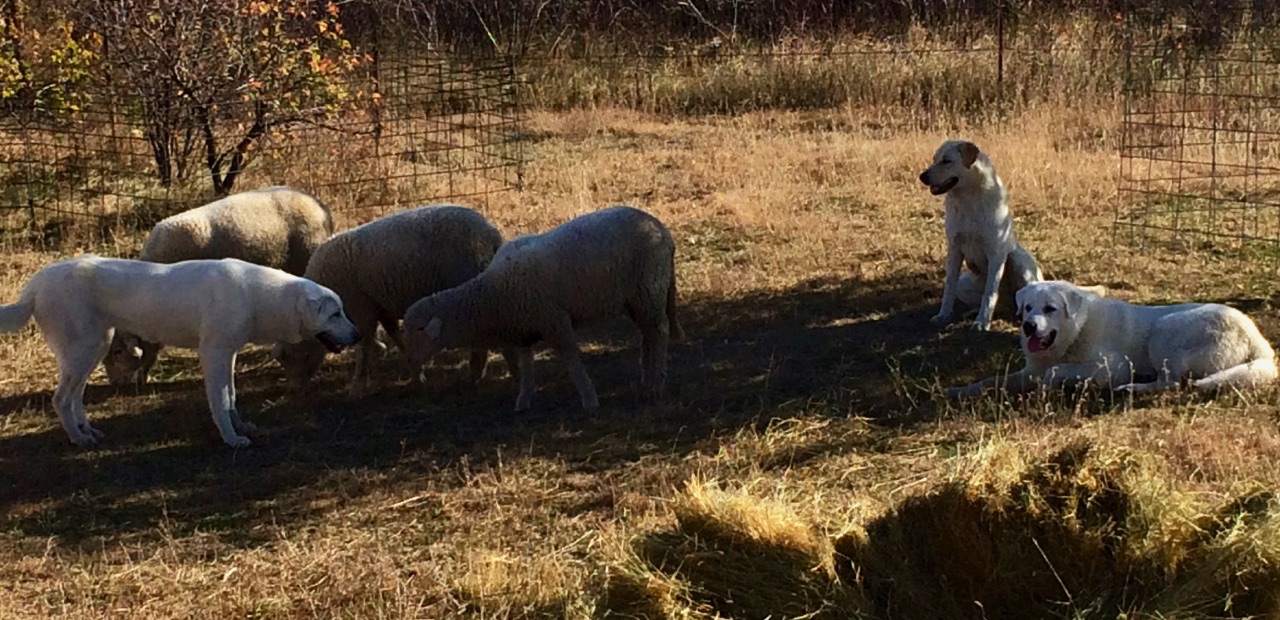
Characteristics
Intelligence
In our experience, we have found these dogs to be extremely intelligent. In researching these breeds, we found some information indicating they are not as trainable as other dogs, suggesting they are less intelligent. We believe that information was about parlor trick-type training (e.g., sit, lay down, roll over, beg, etc.). In that regard, we can see how these dogs would not be very trainable. They don't tend to pay attention to voice commands much. As a "working" class breed that is expected to do their duties (guarding livestock) out in a pasture in the middle of the night without the guidance of their human master, these dogs have a different kind of intelligence. They are "free thinkers." We have experienced these three dogs exhibiting high intelligence and cooperation when working together to guard our livestock, hunt, and patrol our property.
Size
Our male, Dionysus, is about 130 pounds. The females are about 90 and 100 pounds. They are all about 36 inches tall at the top of their head when standing. Compared to a wild coyote of about 40 pounds, these LGDs are much larger, stronger, and about as fast.
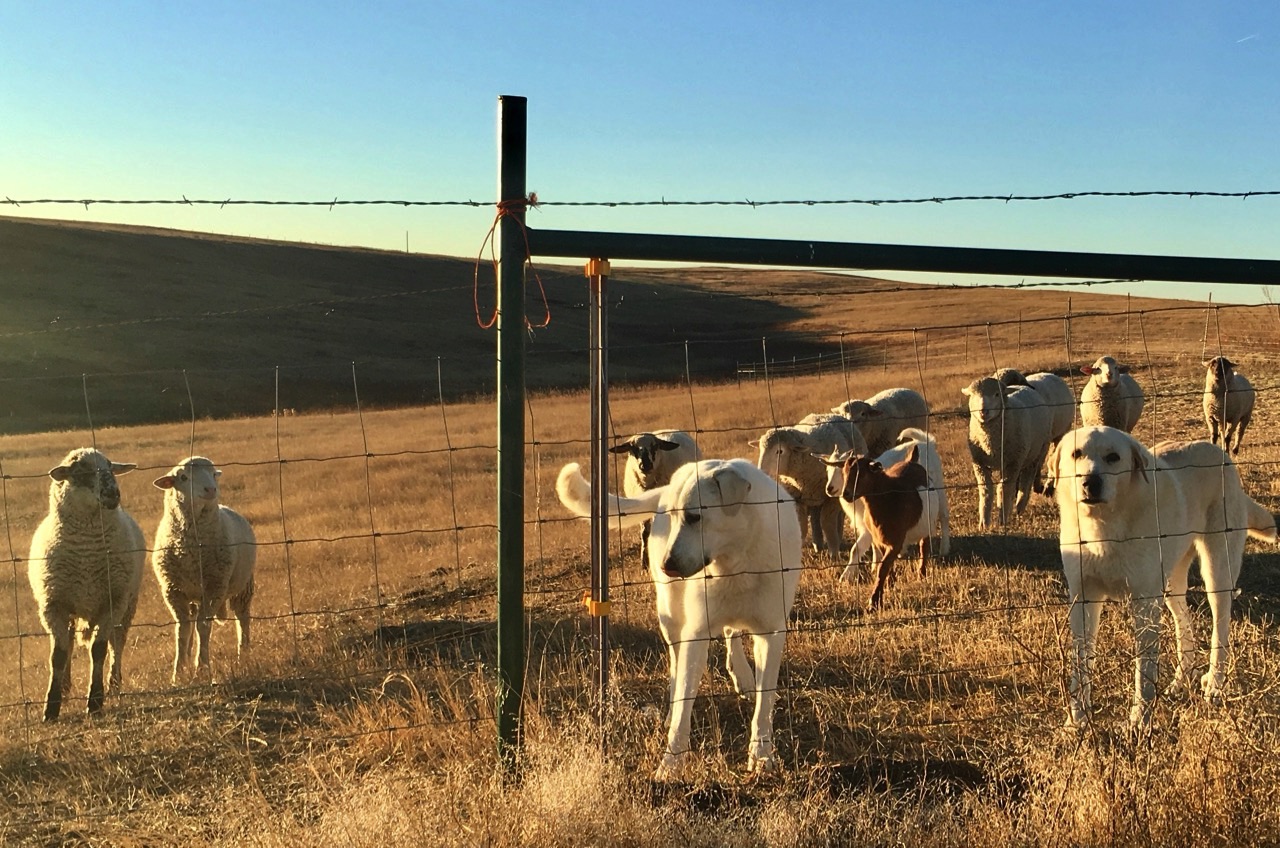
Athletics
We have witnessed Athena (our smallest dog) jump over a fence and clear the top strand of about 5'3". Both females can easily jump up on top of a large round bale of hay (the 1500-pound variety) with a single leap. Our male, Dionysus, does not jump like the females. Instead, he uses his sheer strength to his advantage. All three have incredible stamina. We've seen all three chase jackrabbits for well over 1/2 mile at full speed and hardly be winded.
Weather Hardiness
These dogs are tough. They can withstand the most brutal of weather conditions. Even though they always have shelter, they prefer to be out in frigid winter temperatures -- even at -20 degrees Fahrenheit. In the summer heat, as long as they have access to water and can find shade, they do just fine.
Temperament
These dogs are either with me or in a paddock with good fencing. We do not allow these dogs to run free without me nearby.
With people they know, they are very calm, loving dogs. They approach with wagging tales and want to be petted. With strange people, we believe they could be aggressive if I (alpha male) were not there. However, they learn fast that if I am talking to strangers with a calm, friendly voice, then the strangers must also be OK.
Instinct
These dogs have a powerful instinct to protect anyone or anything (our lambs, our poultry, our cat, etc.) that belongs to their [extended] pack on their turf from any perceived threat.
If these LGDs were not in their paddock and a visitor let a strange dog out of their vehicle, they would probably kill the strange dog.
Puppy Movies!
Behavior
These dogs are nocturnal - up all night and sleep most of the day - unless something exciting is going on.
Their methods of protecting livestock are numerous. First of all, they leave their scent everywhere. We believe this is the first message to any threat to stay away. Second, they bark a lot -- all night long. We believe this is another message to any would-be threat to stay away. Third, they work together. Whenever they suspect a threat, at least one female LGD will retreat and stay with the livestock they are guarding while the others attack the threat straight on. Even when they are very focused on a single threat, we've noticed they like to look around their backside -- looking for additional threats quickly, I think.
Many dogs don't look to the sky for threats. These dogs do. Whenever a hawk or eagle gets too close, they start barking and chasing it. However, if a duck or robin flies over, they will ignore it. Somehow, they know the difference.
On our daily perimeter walks, the two females are usually in front of me by about 50 yards, moving back and forth quickly, looking for anything interesting. Dionysus is generally about five steps behind me, mainly watching his sisters for any sign of danger. If he picks up any signal, he charges in at full speed.
One story we like to tell folks is about their instinct to guard baby lambs... One time, when the pups were only about five months old, we had them in our fenced-in backyard with lambs that were about three months old. Michelle and I heard a disturbance in the middle of the night, so we looked out the window into the moonlit night. A pack of coyotes came in very close -- just outside of the fence. The coyotes were yipping and howling. They were interested in a meal. The lambs had bunched up in a tight group. The two female pups stayed with the lambs - circling them. Dionysus would charge out to the fence with the meanest little barks and growls he could make at his age. Each time he charged, the coyotes would scatter. We watched this in the moonlight repeatedly, ready to jump in if needed. But the pups handled it just fine. The coyotes gave up.
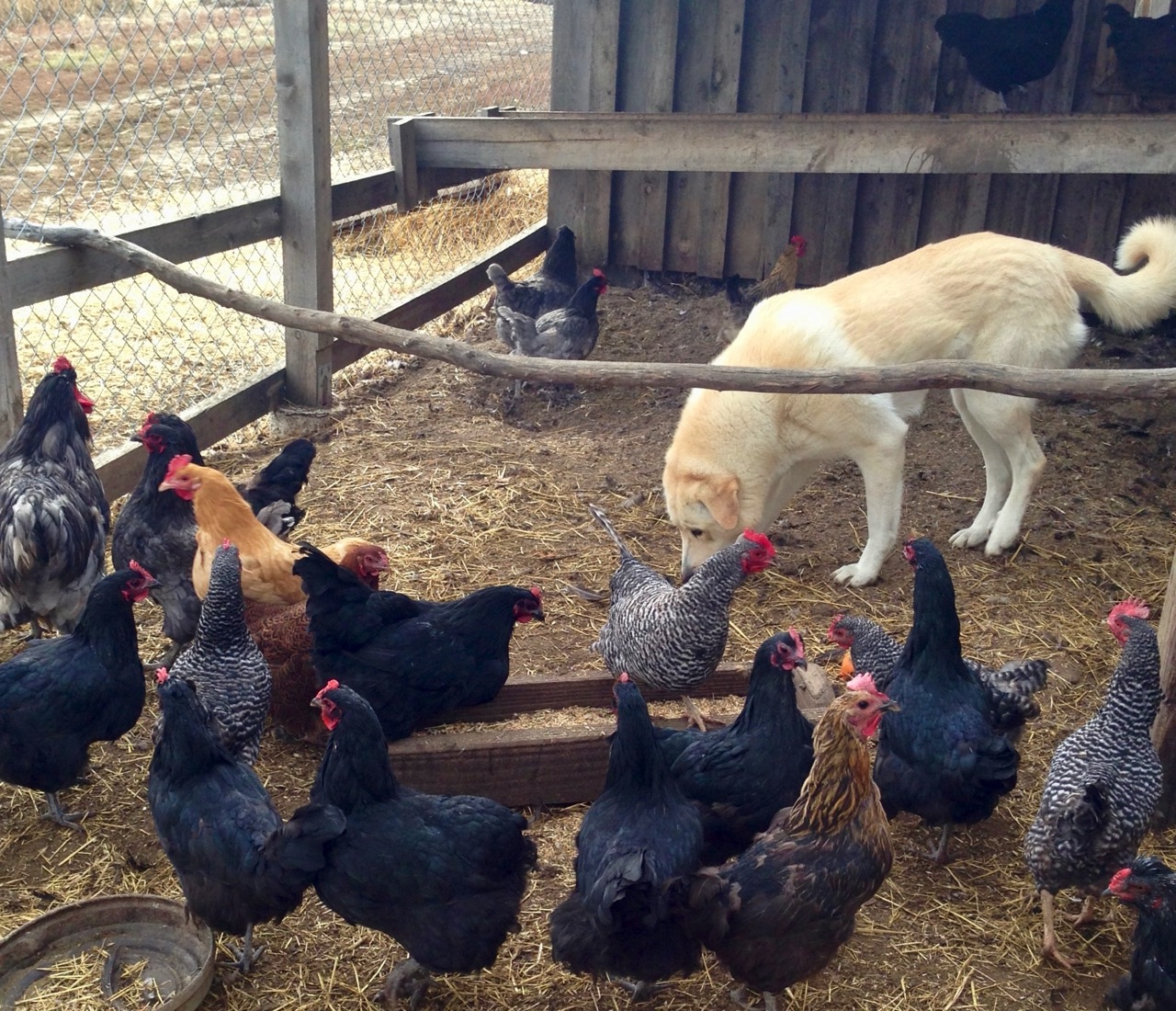
Training
When researching this three-way mixed breed (and similar breeds), I found much information about various training methods. Based on this information, I decided to develop a simple training program that focuses on just a few key points. Joel Salatin once said, "We respect and honor the pigness of the pig and the chickenness of the chicken." In this wisdom, we wanted these dogs to be able to exhibit their natural, instinctive behaviors to a very high degree. I wanted these dogs to do what they do naturally.
This is the training program I used:
1) Alpha Male
I taught the dogs that I am the pack’s alpha male. I did this by playing rough puppy games with them when they were pups. I got down at their level, rolled them around, and always maintained the upper hand. When they needed discipline (e.g., biting me with their sharp little puppy teeth), I would push them down or sometimes give them a quick little tap, along with a stern voice command of "no" (or a low-toned grunt).
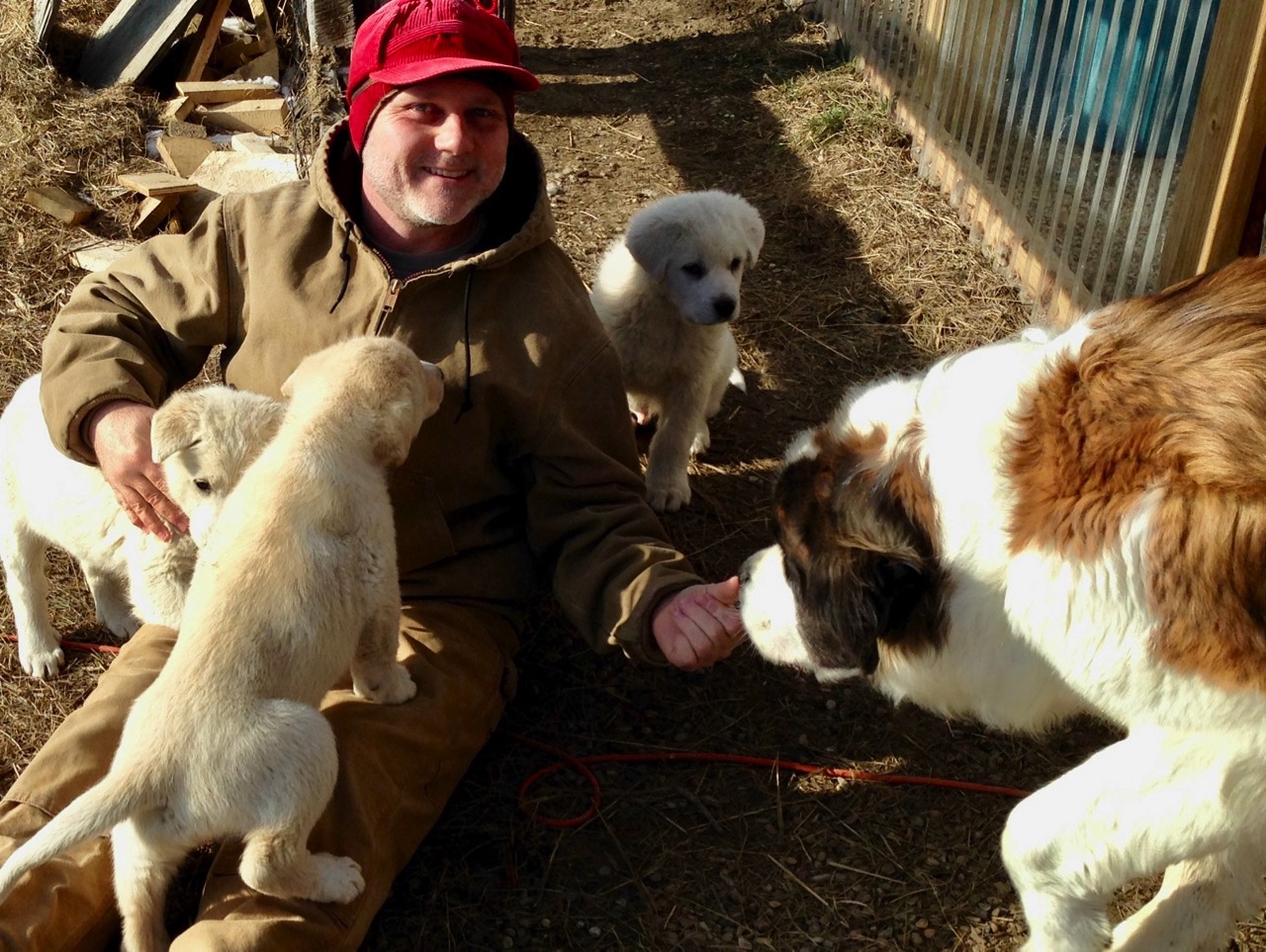
2) Turf
I taught the dogs where their turf is. Our property consists of 120 acres. Nearly every day, rain or shine, we go for a walk. As young pups, the walk was short -- just around the buildings. As the pups grew, our walk would expand until we were walking the entire fence line perimeter (two miles). If the pups approached a boundary fence with plans to cross it, I would start applying negative pressure by warning them with a low-tone voice not to do it. If they didn’t respond to that, next, I would escalate the harshness in my voice. If they still ignored me, I would cross the fence myself and yell and flap my arms and clap and grunt at them (more negative pressure) until they crossed back onto our property. When they were back on the correct side of the fence, I would reward them by talking calmly and petting them (positive affirmation). They learn about turf quickly. As they grew older, if they would test the boundary, I would generally only need to grunt at them and say "no" to get them to come back.
3) Pack Members and Visitors
I taught the dogs who else is in the same pack and also reports to the same alpha (me). Again, they learn fast. They realize that the cat is OK because they see me holding and petting the cat—the same thing with the poultry, lambs, and goats. I give the LGDs the message that the cat is with me, the chickens are with me, the turkeys are with me, etc. Whenever we introduce a new animal, we make sure the LGDs are safely in their paddock and can see me (alpha) being accepting of the new animal.
Many people visit the farm as farmstand customers or as tour group members. We use a similar training method to acclimate the dogs to visitors. When we get visitors, the livestock guardian dogs are almost always in a paddock with their livestock. I lead the group of people to the paddock and make sure I’m between the visitors and the dogs, and the dogs are between all the people and the livestock. Very intentionally, I turn my back to the visitors while speaking calmly to show the dogs that the alpha male is not threatened by the visitors. The dogs pick up on this and are more accepting of the visitors.
With these three training points, along with their instinct, the LGDs have everything they need to know to do their job -- protect anyone or anything that belongs to their pack on their turf from any perceived threat.
Zeus, our previous Saint Bernard farm dog (who passed in 2020), was a wonderful mentor for the LGDs. He taught them many lessons that only another dog can teach. Things like: when the tone of alpha's voice gets low, you better pay attention; don't get close to a moving automobile; don't get close to the honey bee hives; and it is OK to let the baby lambs crawl over you. Zeus weighed about 145 pounds, was larger than the LGDs, was much older, and was here before them. So, he was dominant over them.
The only voice commands I work on with the LGDs are "come" and “no." Every time they come to me based on the command “come," I reward them -- no matter what kind of mischief they might have been in. If they don't respond to “no," I escalate the negative pressure. When they finally respond, I reward them -- again, no matter what kind of mischief they were into. Generally, they mind reasonably well. However, I must remember how their instincts guide them. If they think they must protect me or the pack, there is no command I can give them to get them to stop their guarding behavior. They are free thinkers.
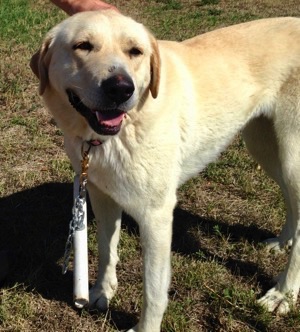
For a short time, we also used "dangle sticks" as a training tool. Dangle sticks are an ancient dog training tool from Middle Eastern countries. It is used to slow a dog down a bit. It is a short stick (we used PVC pipe), about 18" long, attached to a chain and swivel. The chain is then attached to the dog collar. The chain can be lengthened or shortened to increase or decrease the effect. When the dog walks or trots, the stick just dangles with little effect. But when the dog runs, the stick bounces around against their front legs and causes discomfort. The result is slowing down the dog. When these LGDs were adolescents, they tested the rules -- as most adolescents do. When we would go on perimeter walks, and they saw a rabbit, they would chase it -- even if the rabbit went off our property. The dogs were so fast, we started losing control... until we used the dangle sticks. The dangle sticks, along with my negative pressure and positive affirmation, taught the dogs to chase the rabbits to the property border, but no further. After they learned that lesson, there was no need to use the dangle sticks any longer.
Fencing and Facility
I don't know that I could build a fence to keep these dogs in without using electric fencing. For the paddocks we keep the LGDs in while unattended, we use two strands of electric "hot" wire -- one as high as I can mount it on the fence posts and the other at nose level for the dogs. We use the small twisted/braided strands of yellow wire with a standard, solar-powered livestock electric fence charger. They have all been shocked a few times and have learned to respect the small yellow wire.
We have always provided shelter for the LGDs, but they seldom use it. They need shade in the summertime, and I think they need shelter from hail. But other than that, they prefer to be outside.
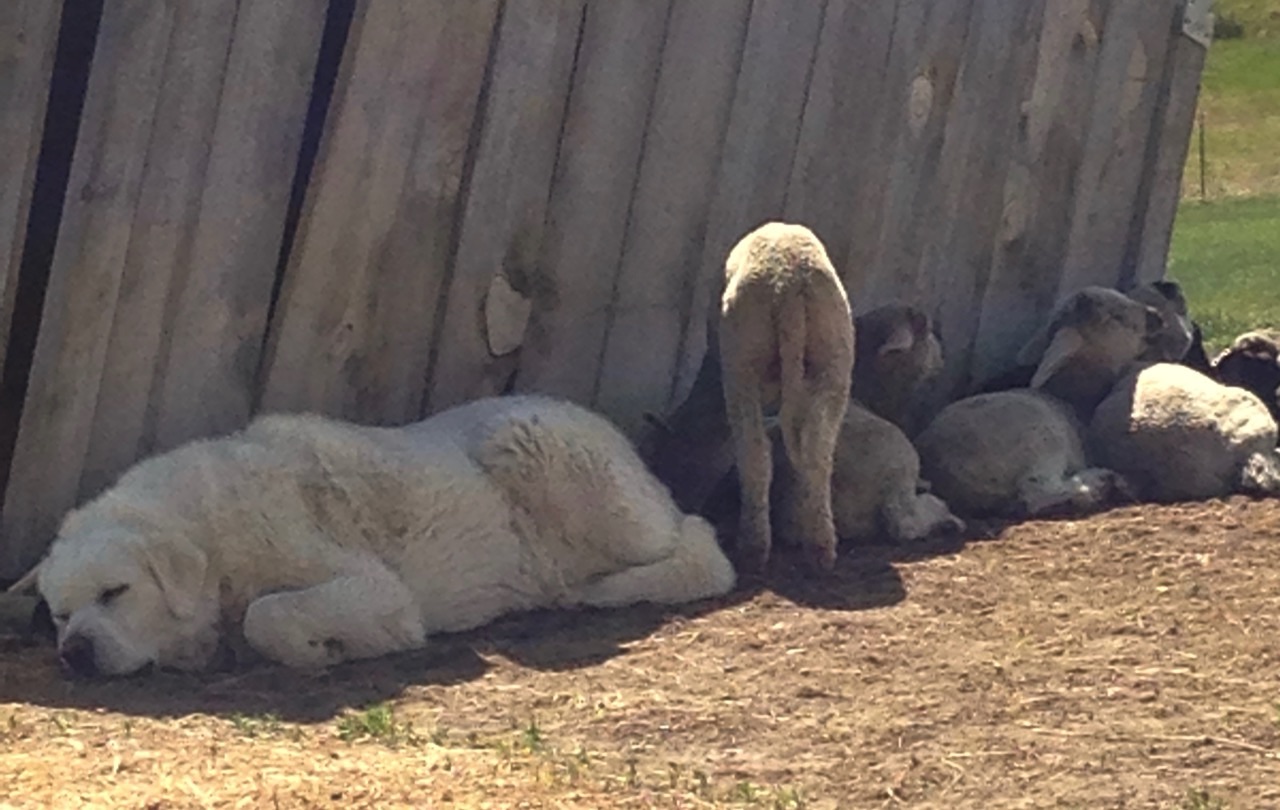
Predator Control
Sometimes, as these LGDs do their job, they will kill predators. So far, this includes coyotes, skunks, and badgers. They also take care of other pests, such as gophers, rabbits, and porcupines.
At night, the LGDs live with the lambs and goats in a paddock with good fencing. There have only been a couple of times when some other animal has wandered into the paddock. When the LGDs became aware of this, they killed the intruder (to protect their livestock).
Occasionally, I let the LGDs out of their paddock and into the night to take care of preditors. One example is when I hear coyotes nearby to the west of the farm. Under specific conditions, I let the LGDs go hunt coyotes. I open the gate and say, "Go get 'em!" The dogs know it is OK to leave the farm property in that direction with that command. The dogs charge out into the darkness. After a few minutes, I usually hear something similar to a dog fight, with barking, growling, and yipping. I call the dogs back after a while (maybe 40 to 60 minutes). They come back and sometimes have blood on them. I always inspect them very closely for injury. So far, it has never been their own blood. They are doing what they have been bred to do for thousands of years.
On other occasions, on our daily perimeter walk, we have come across skunks, badgers, porcupines, and rattlesnakes. These are all formidable critters! The LGDs easily kill badgers. They also easily kill skunks -- however, skunks have their defenses that make me go running the other way. They did kill the porcupine, but then we all visited the vet. All three LGDs had quills in their faces and mouths and had to be put out to remove the quills. The rattlesnake did manage to get Dionysus in the cheek - which also required a trip to the vet. He is now wiser from the experience (I hope).
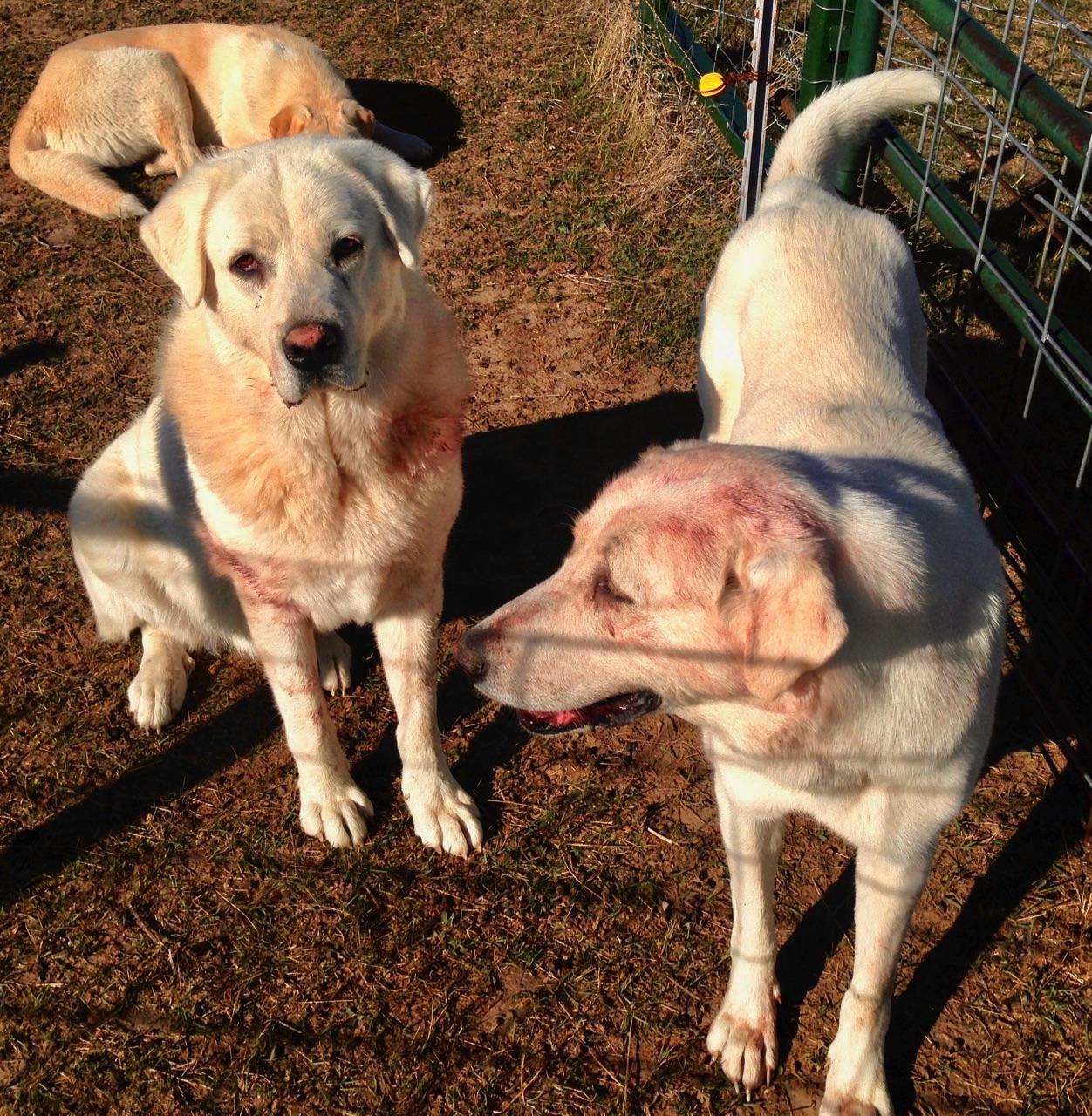
A Photo Slide Show!


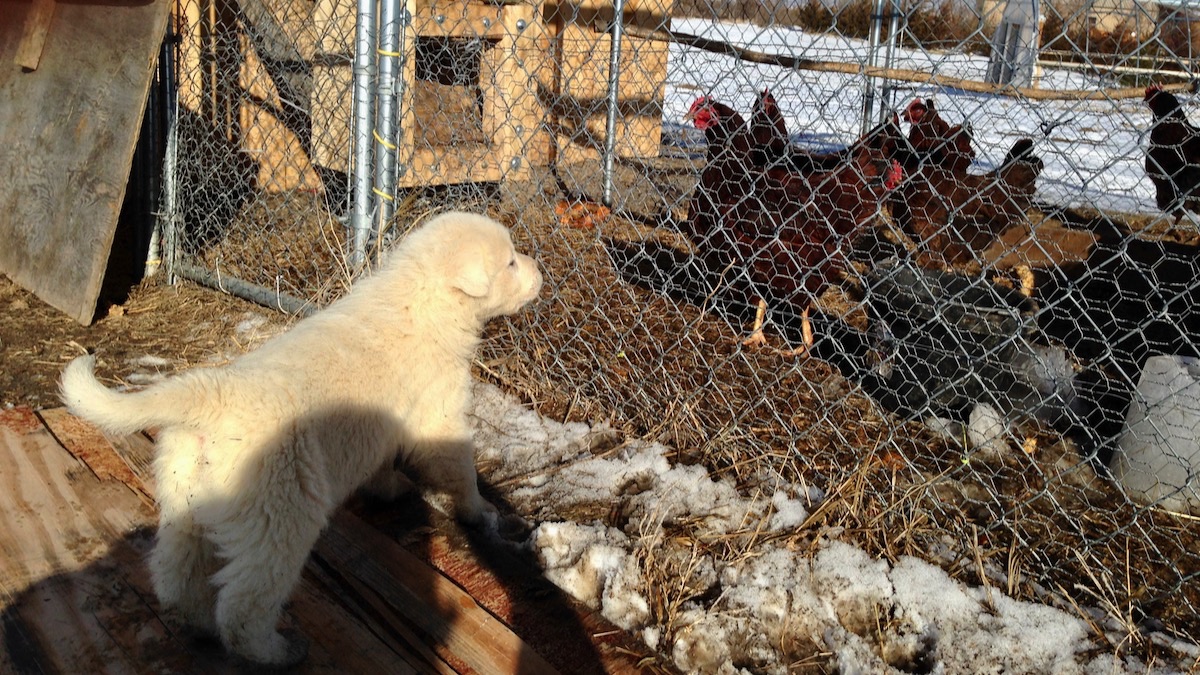
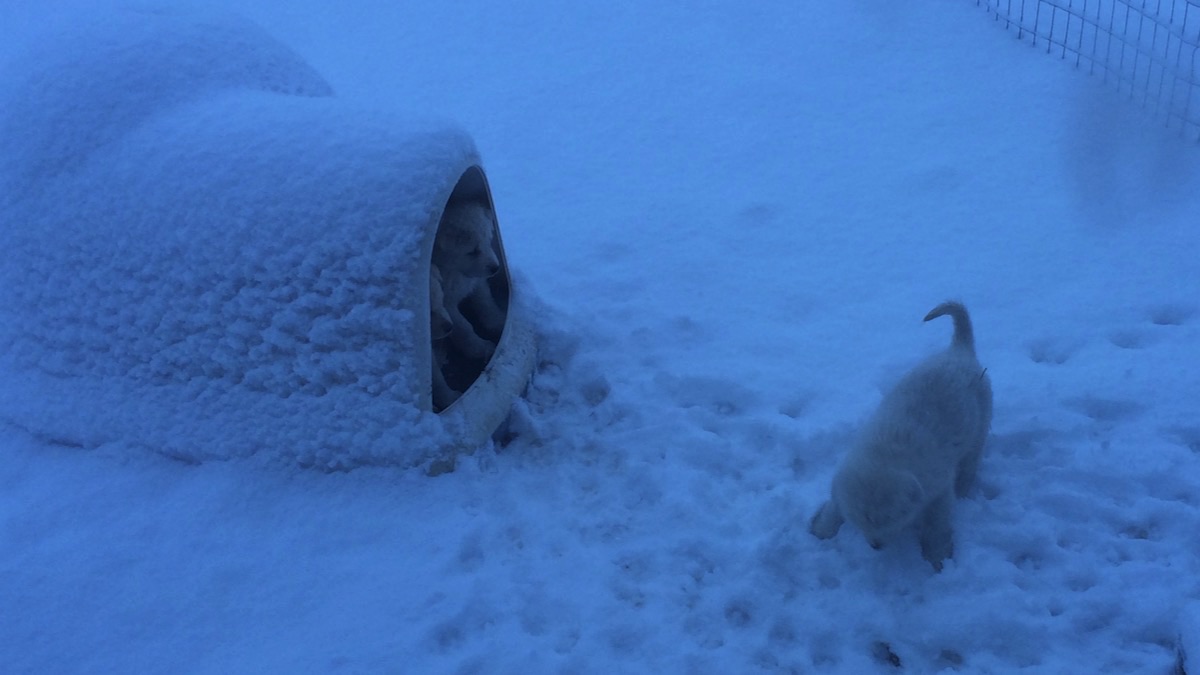
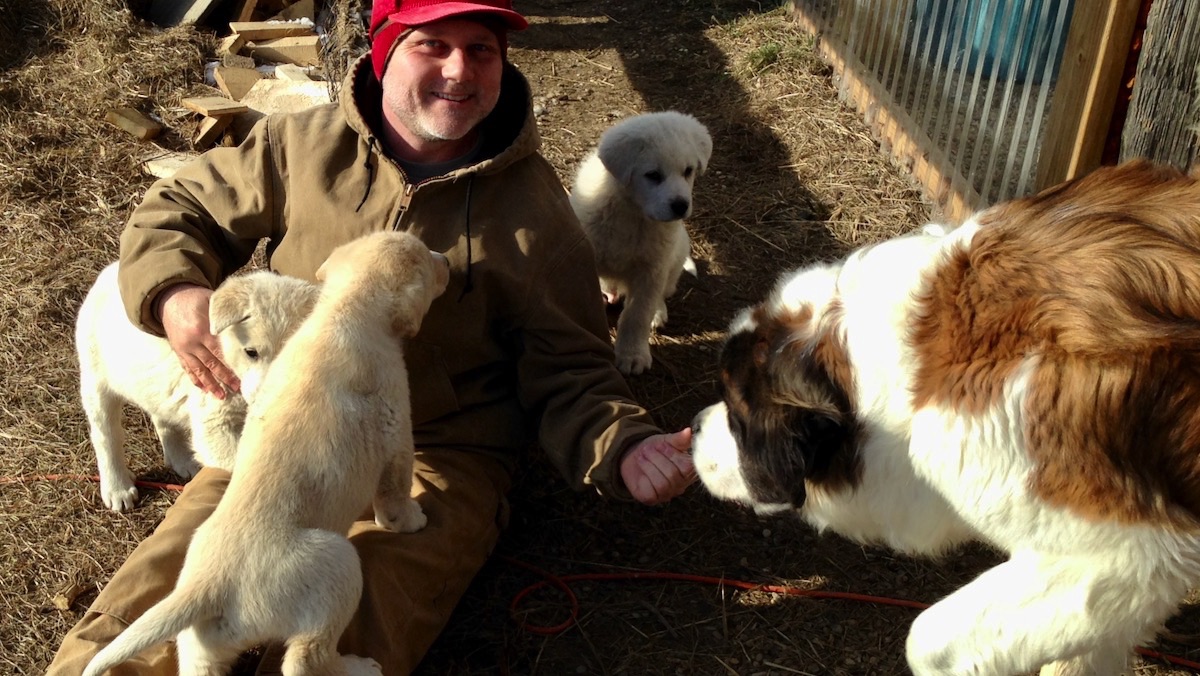

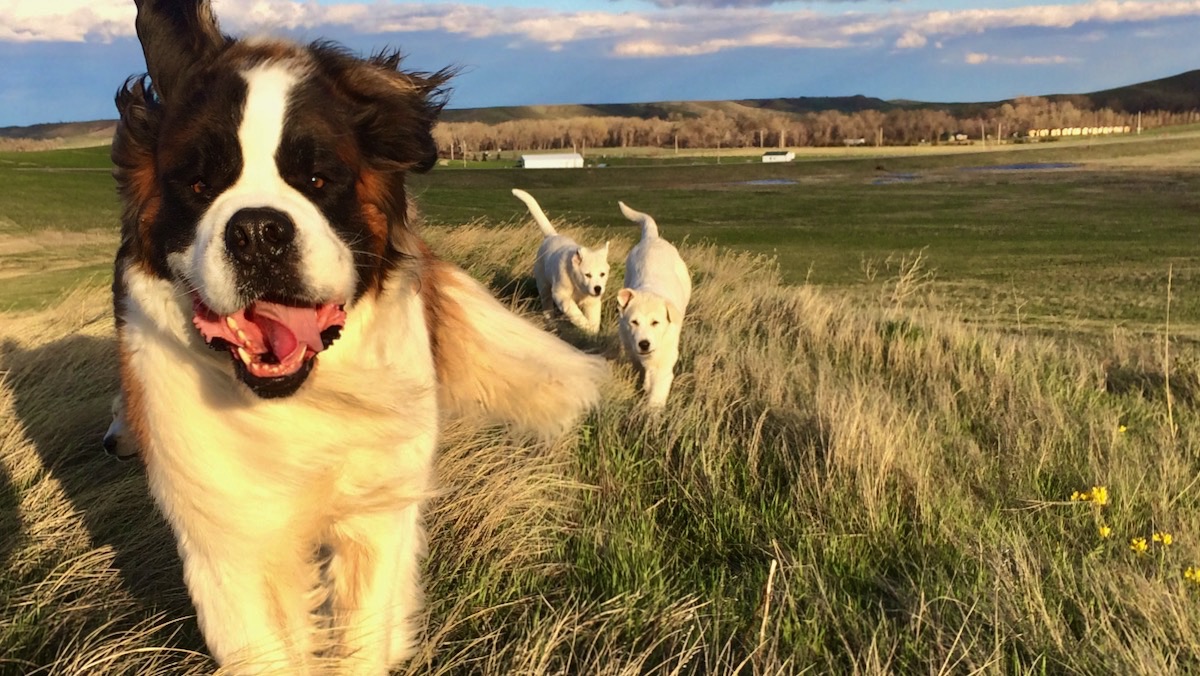

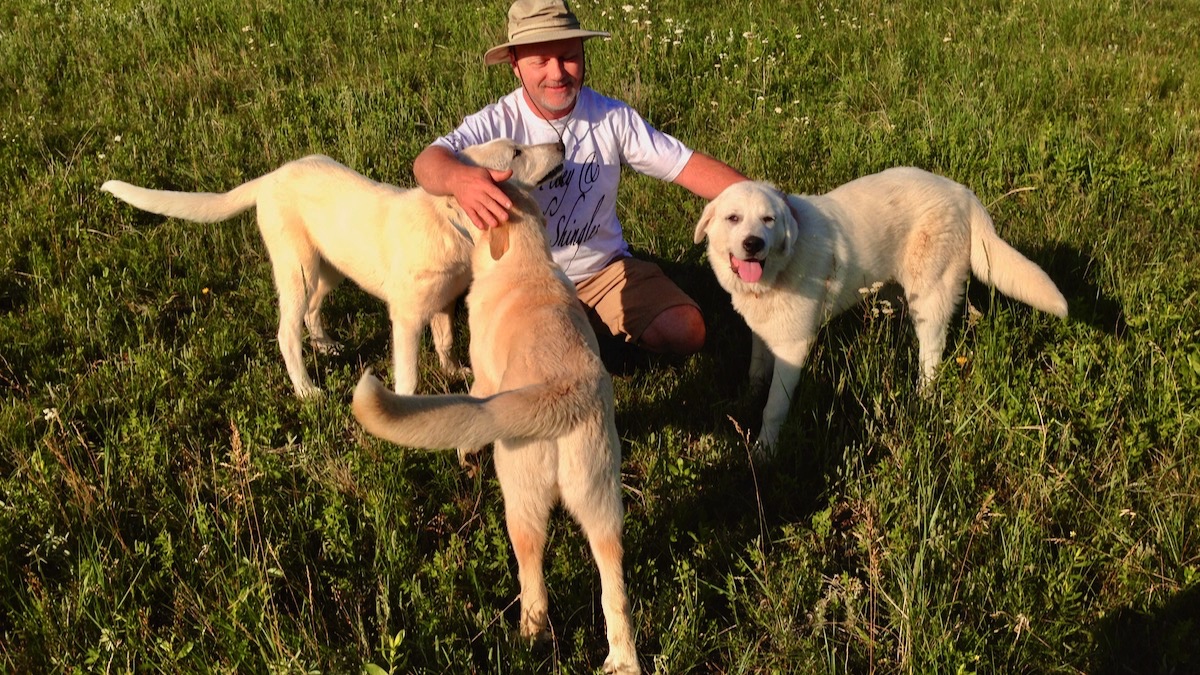

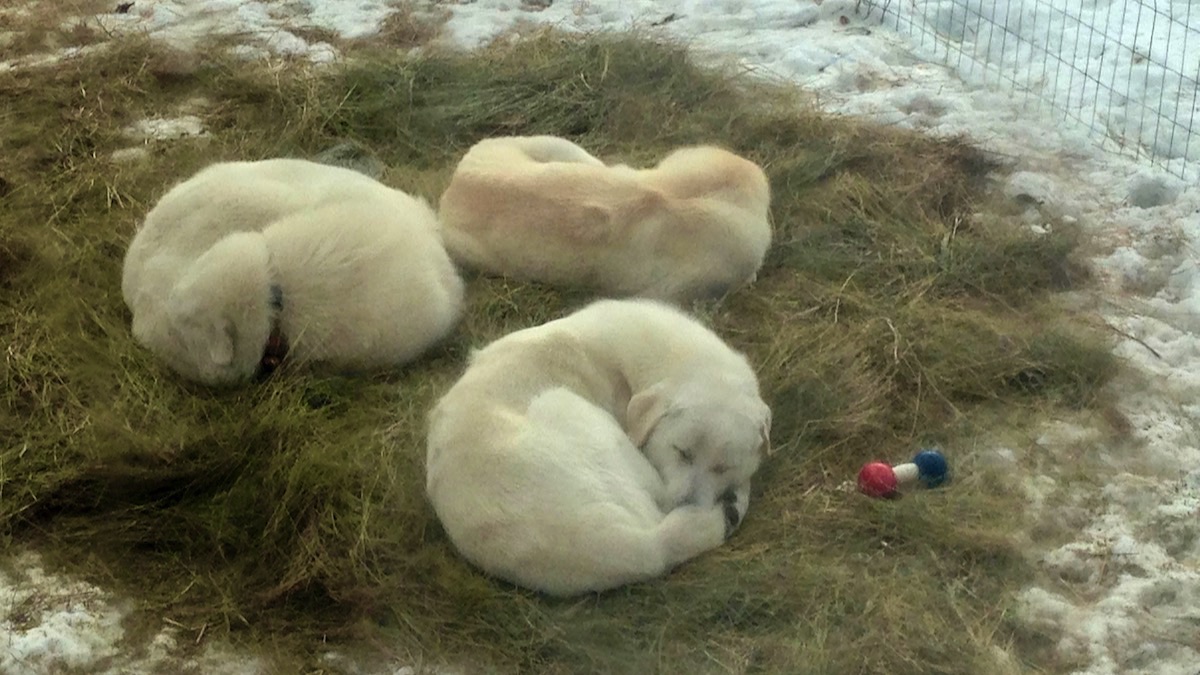
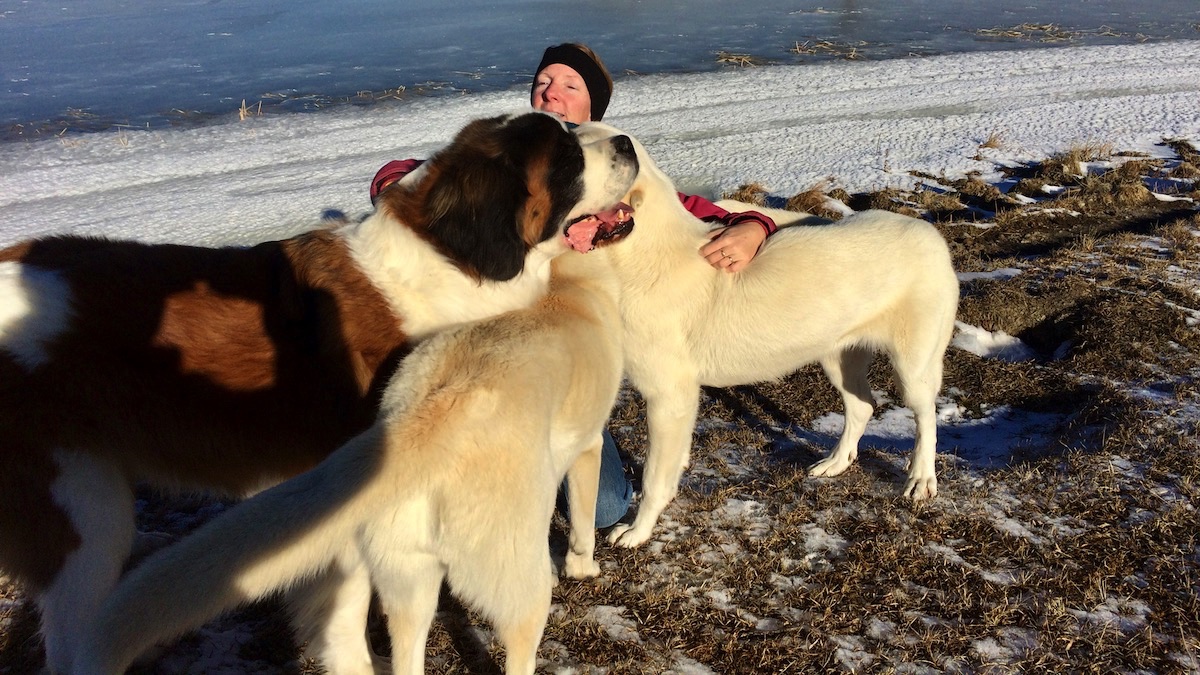

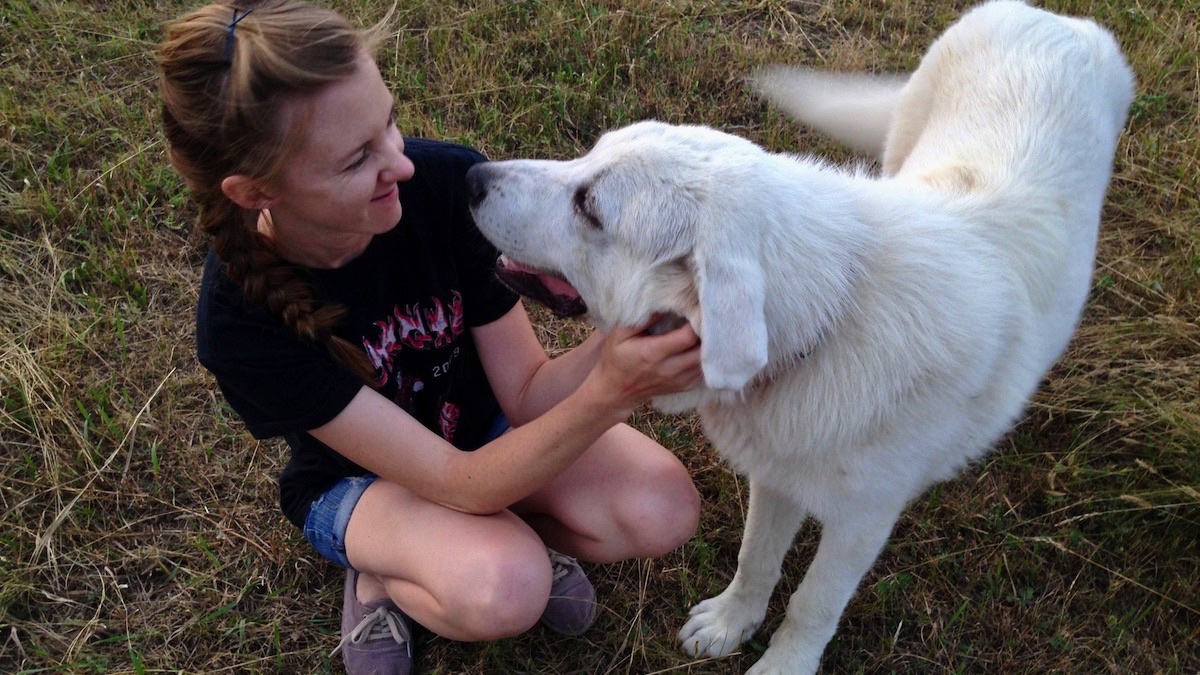
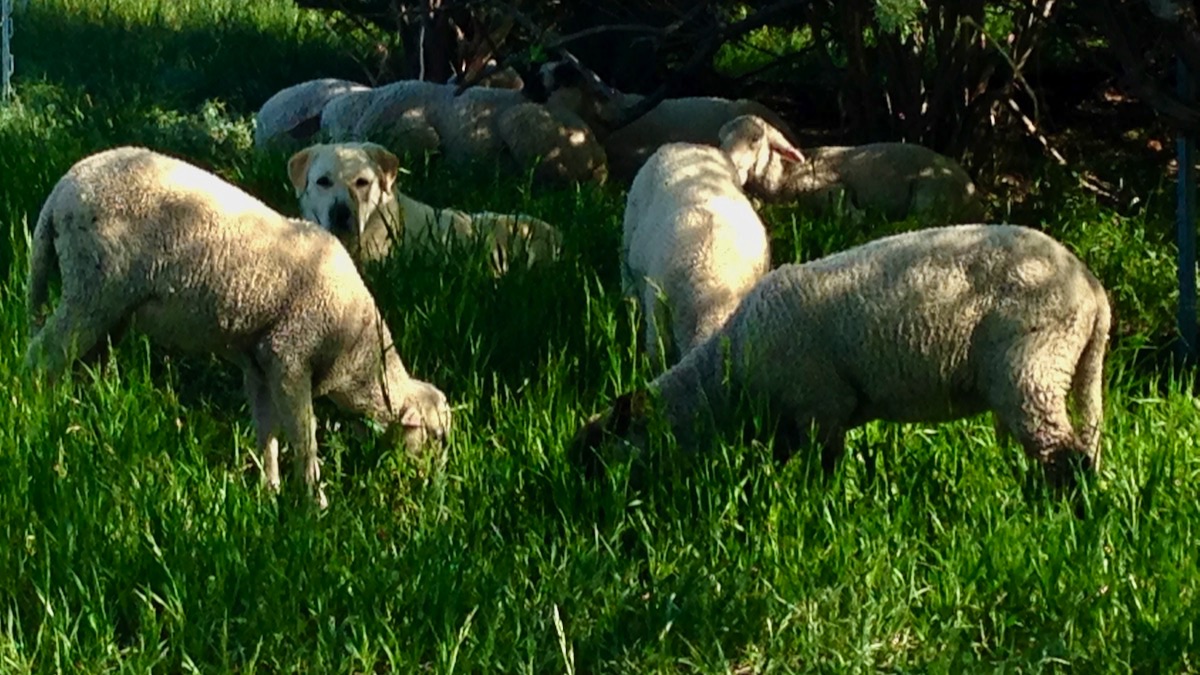
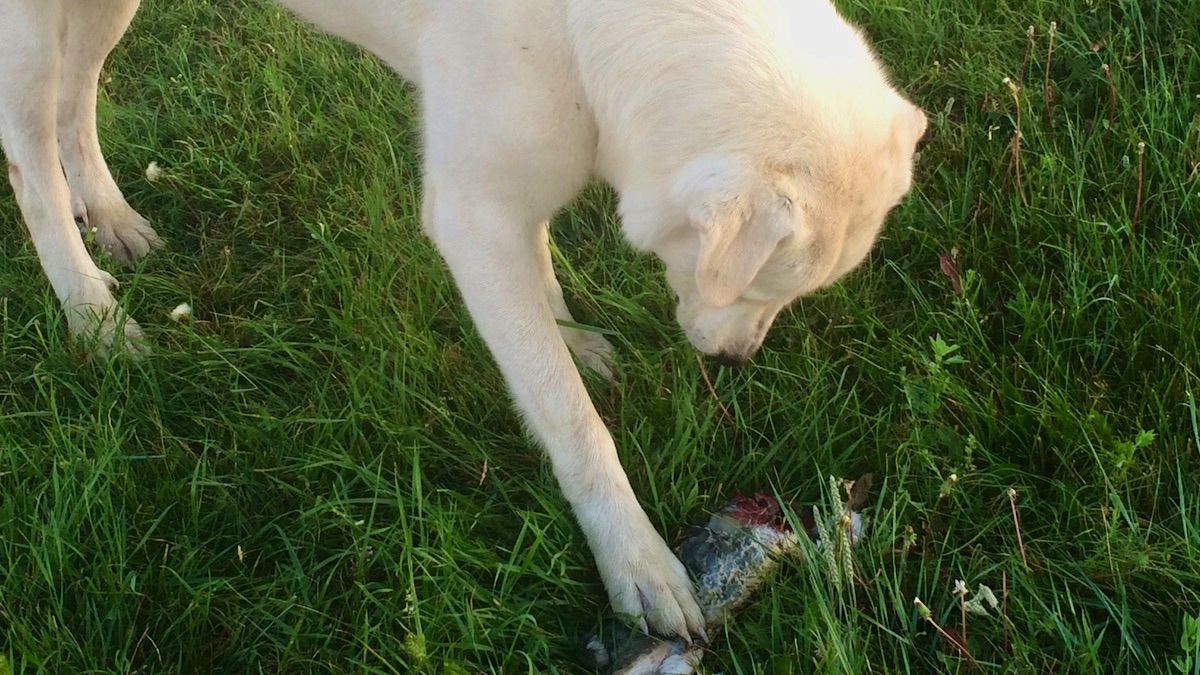
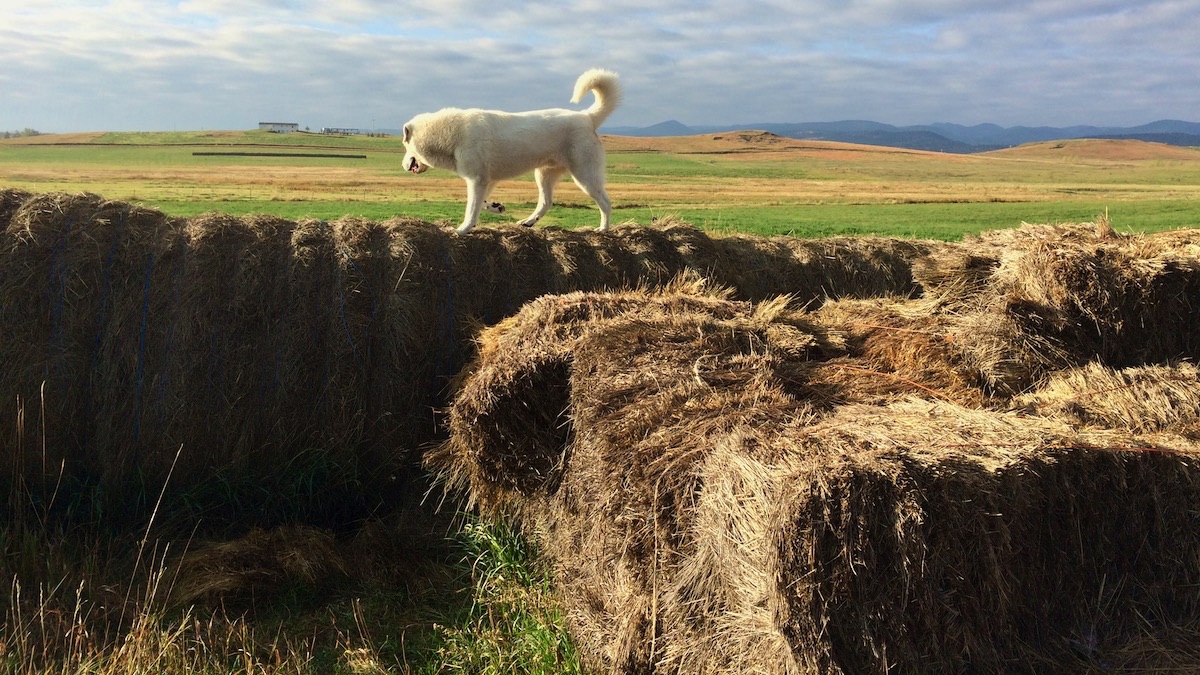
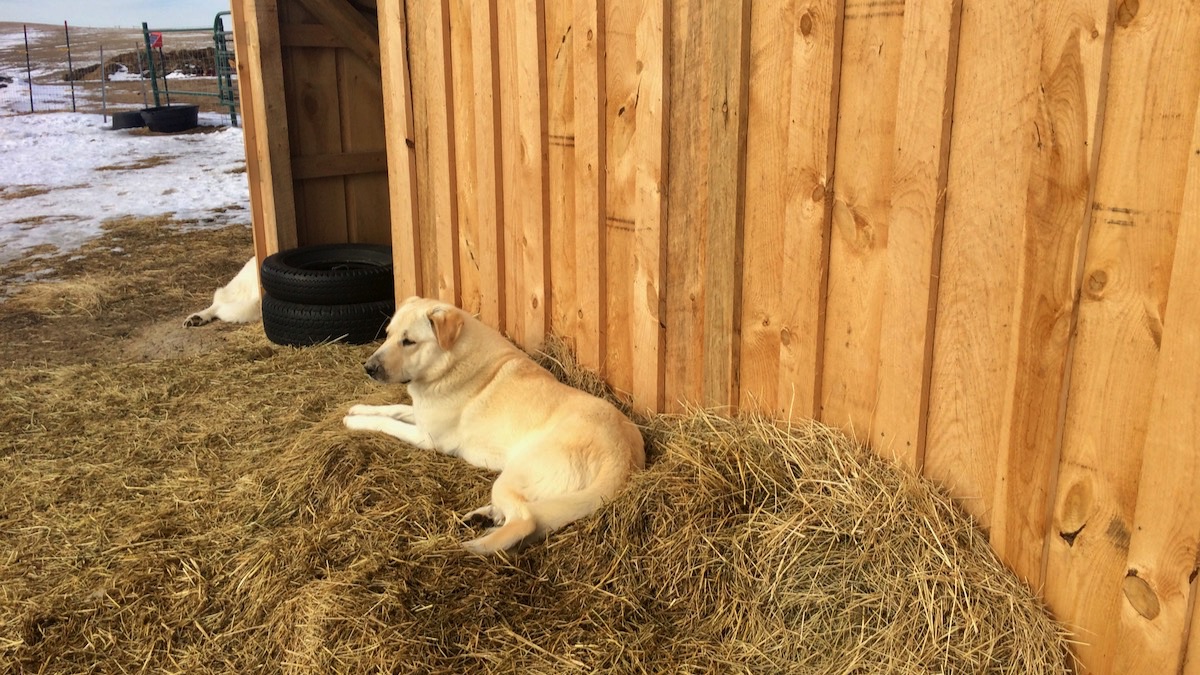

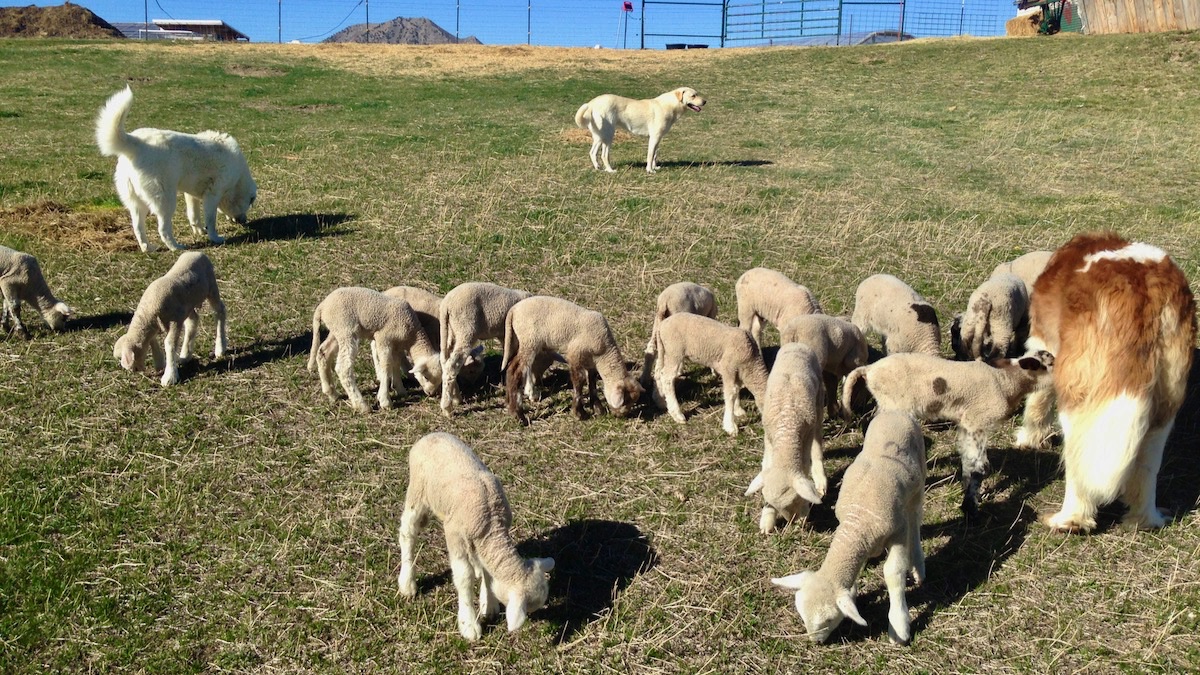
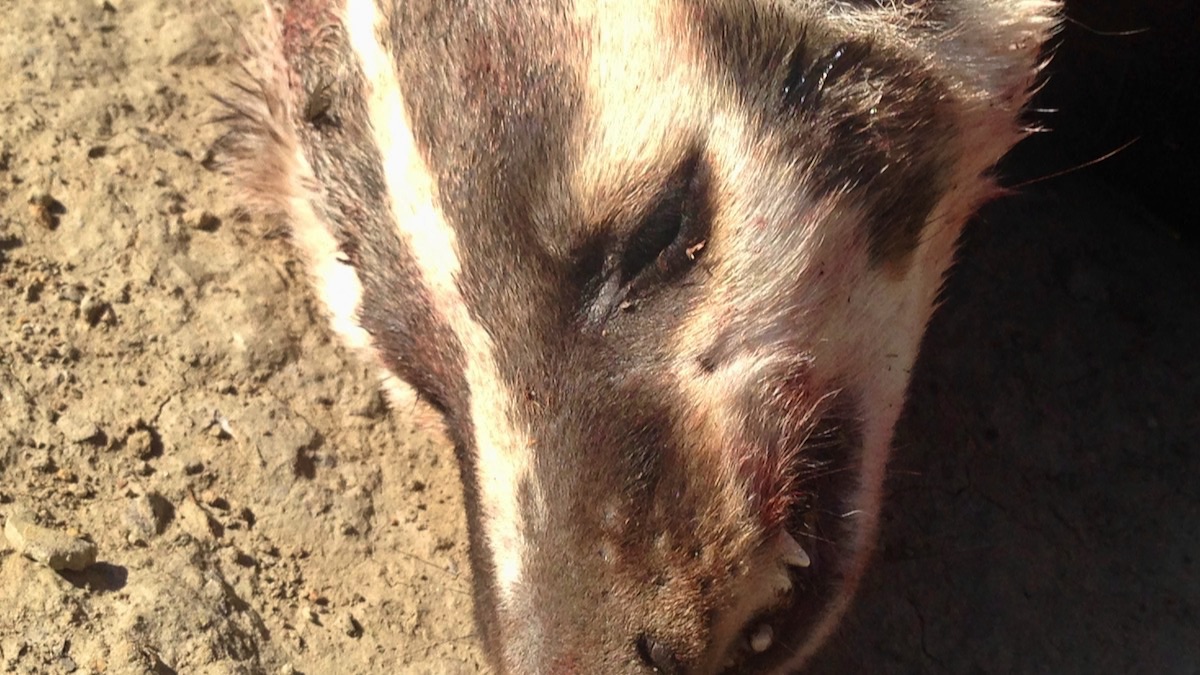
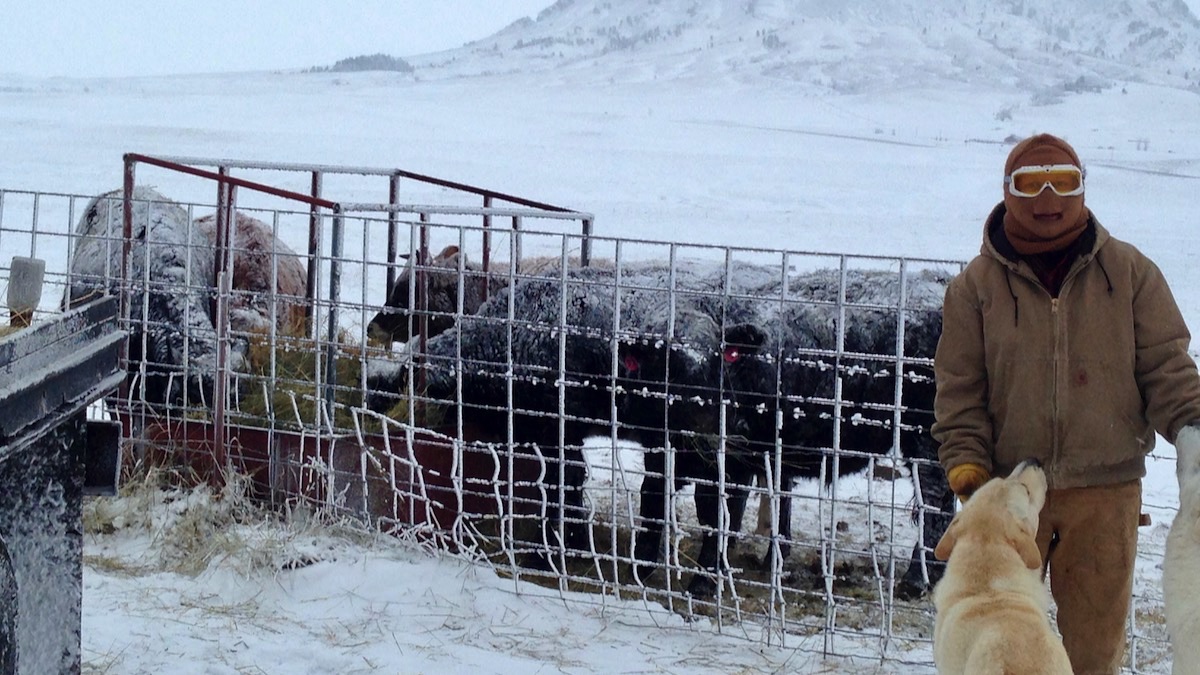
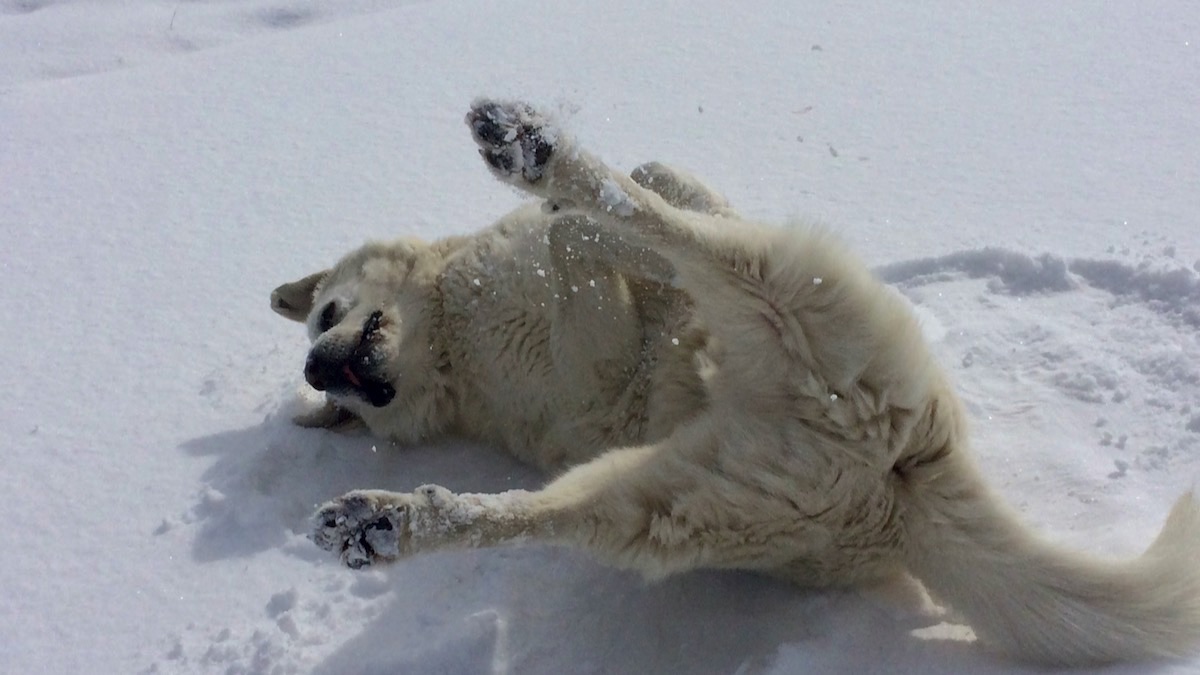
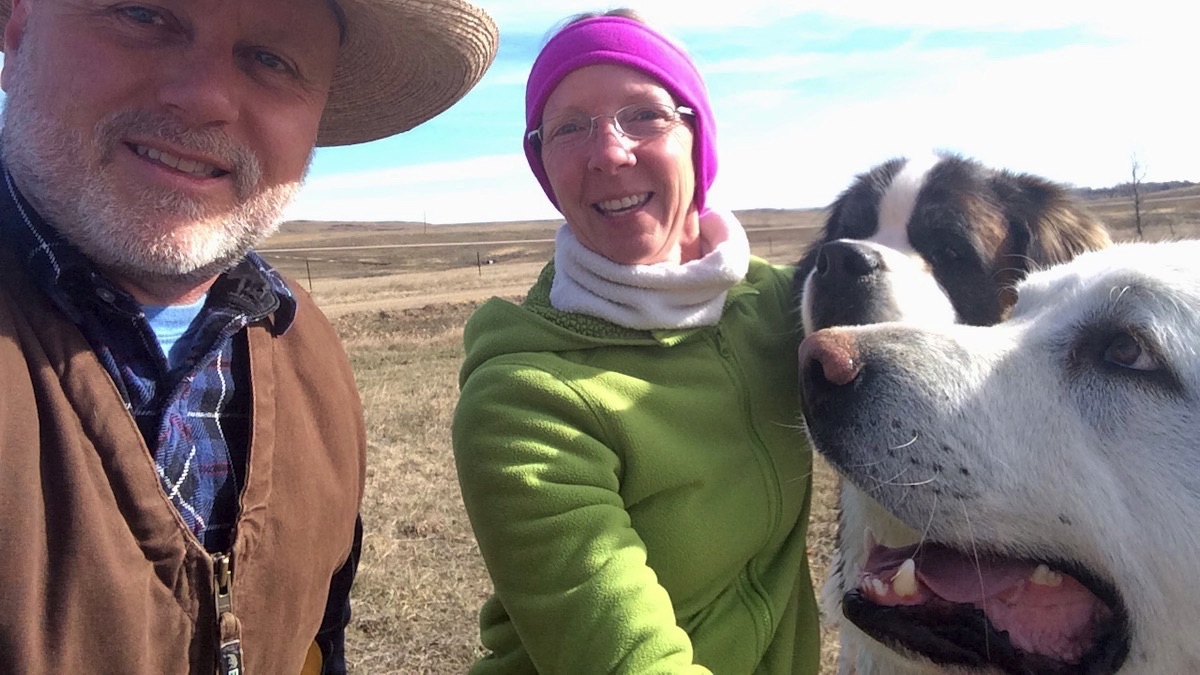
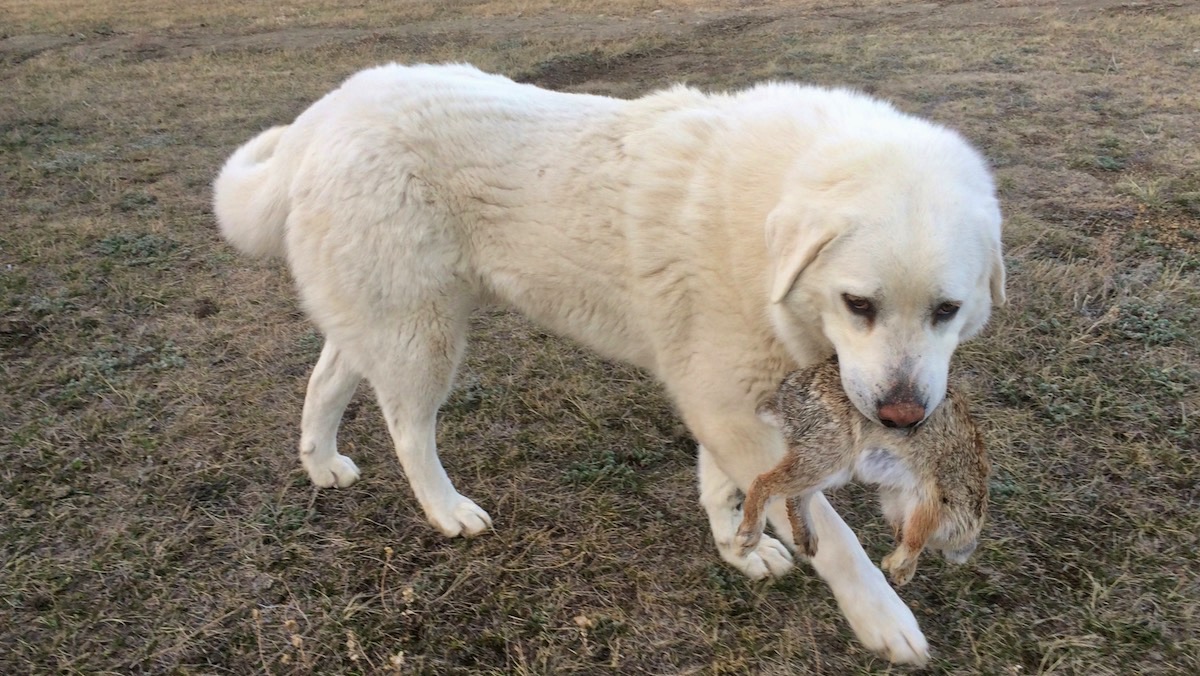
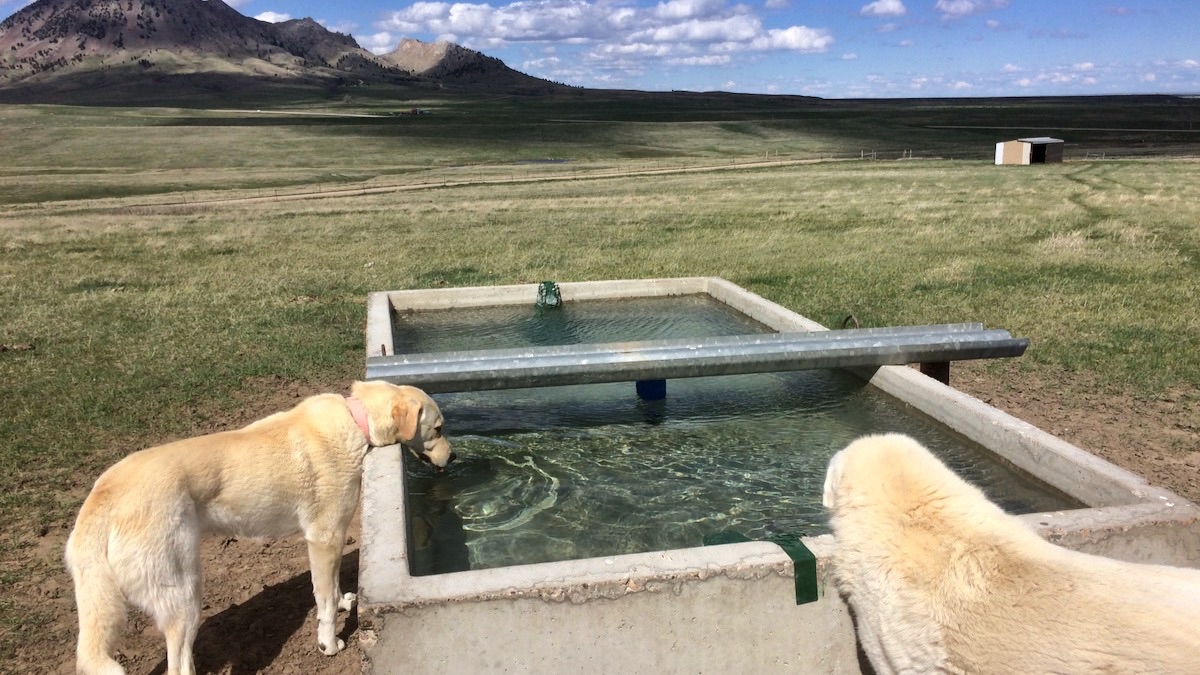
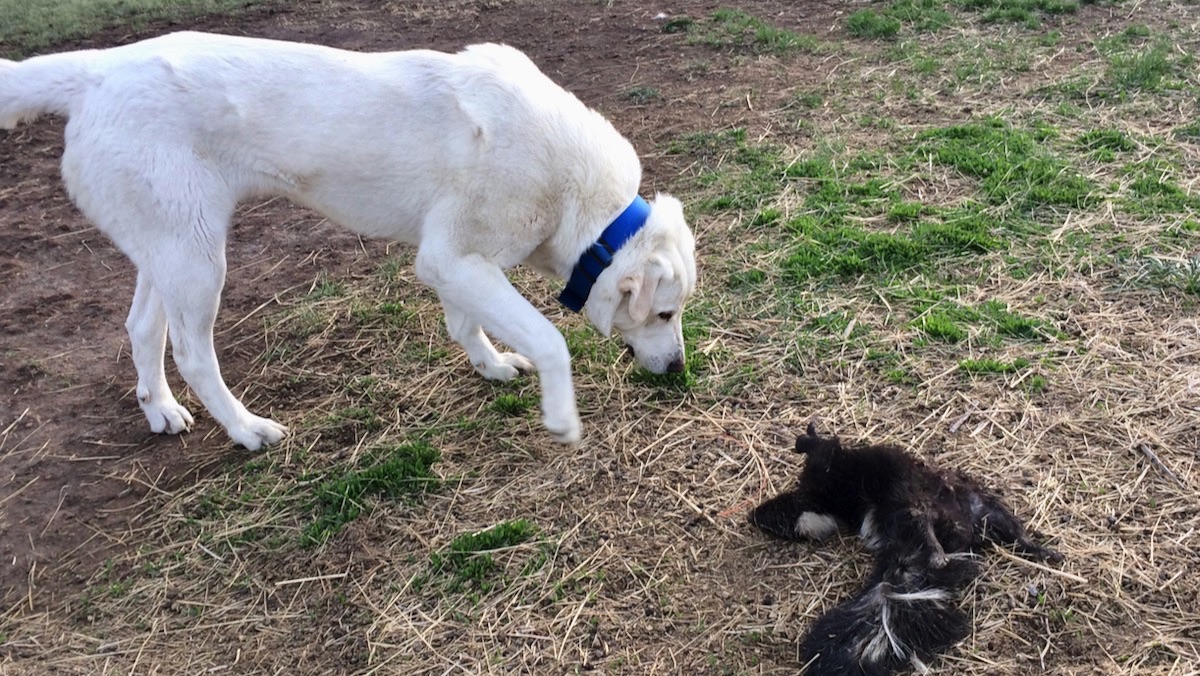
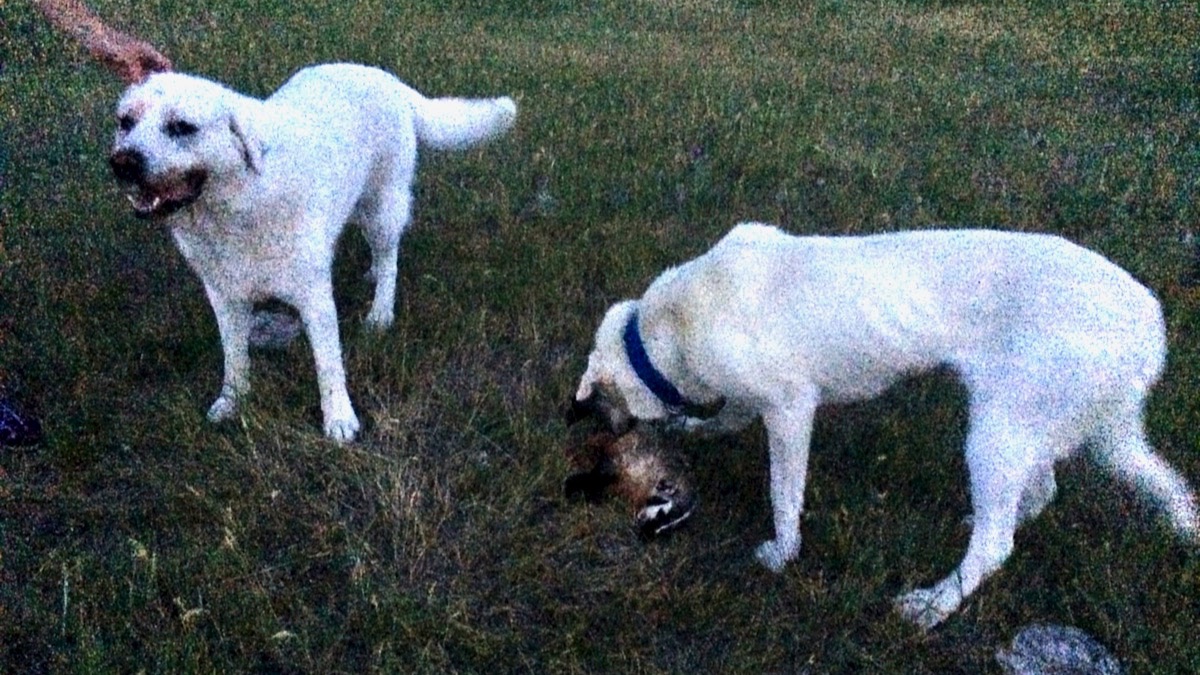
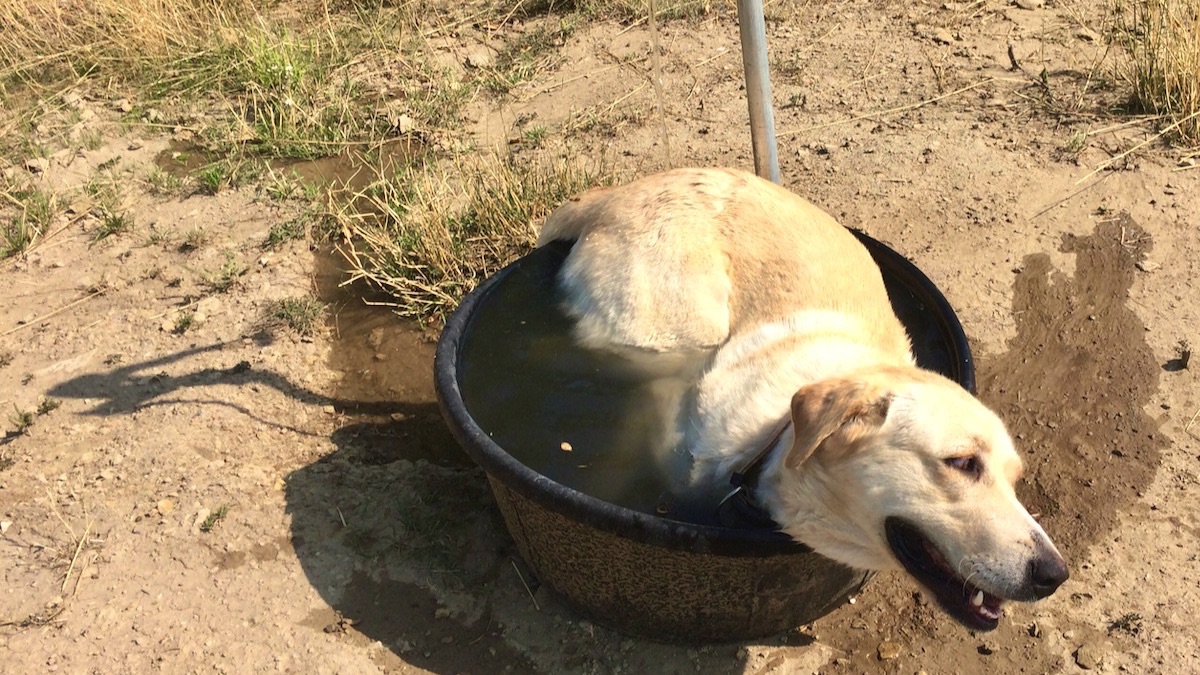
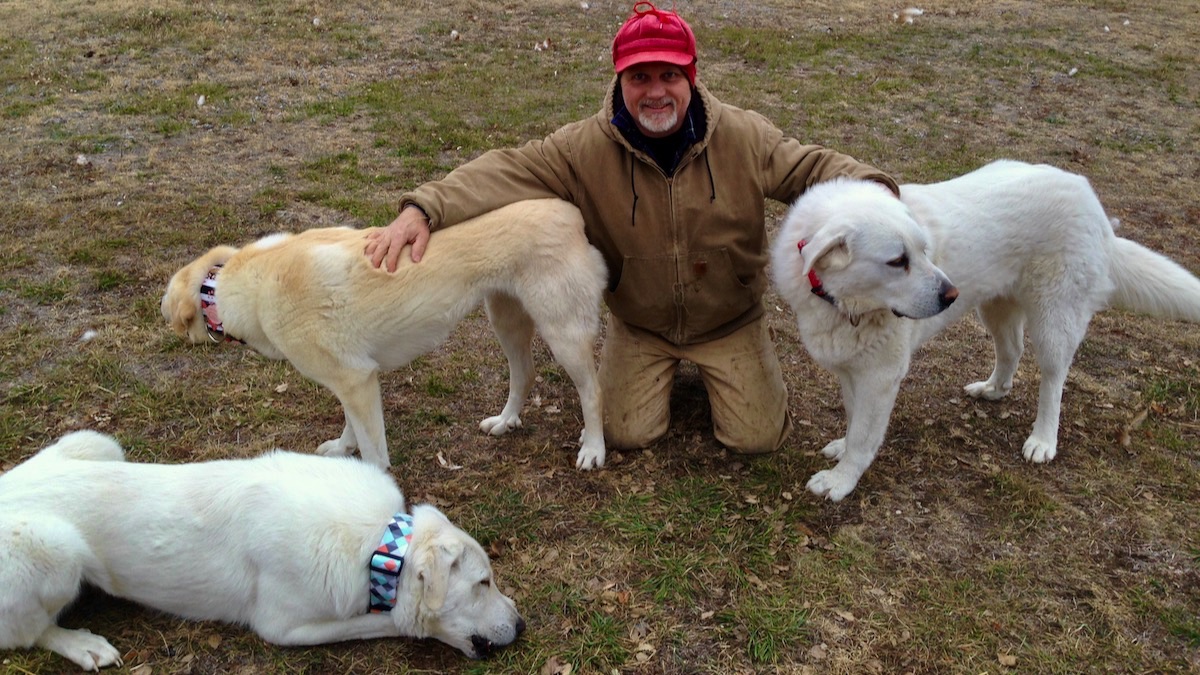
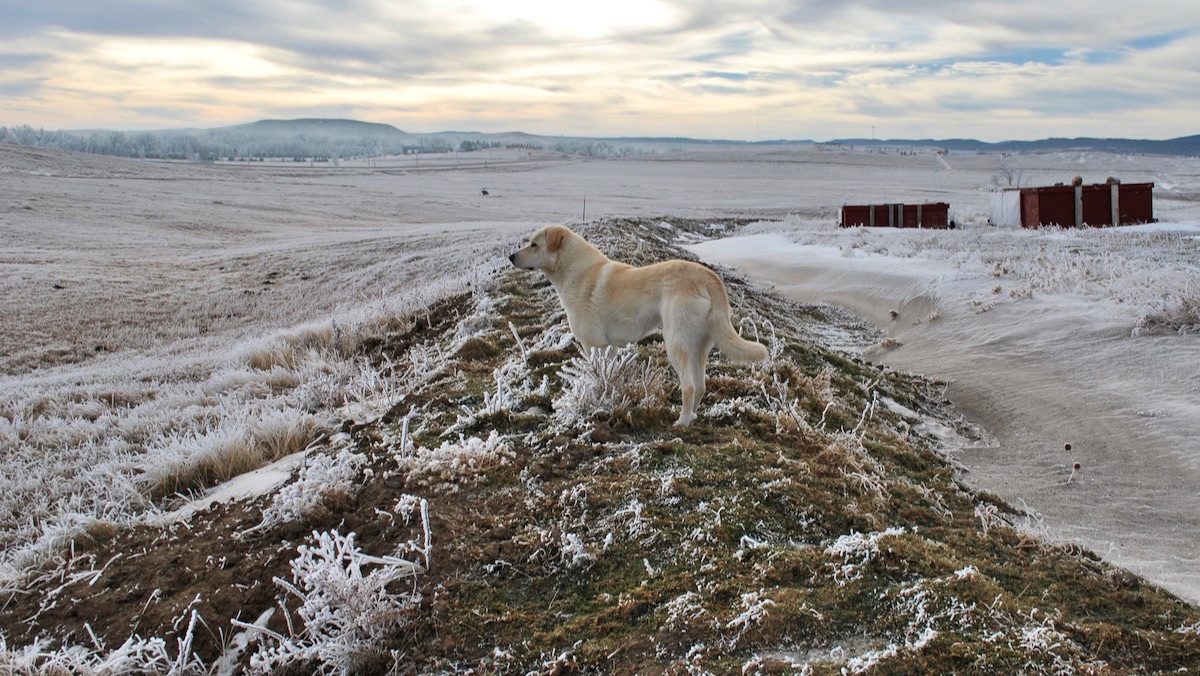
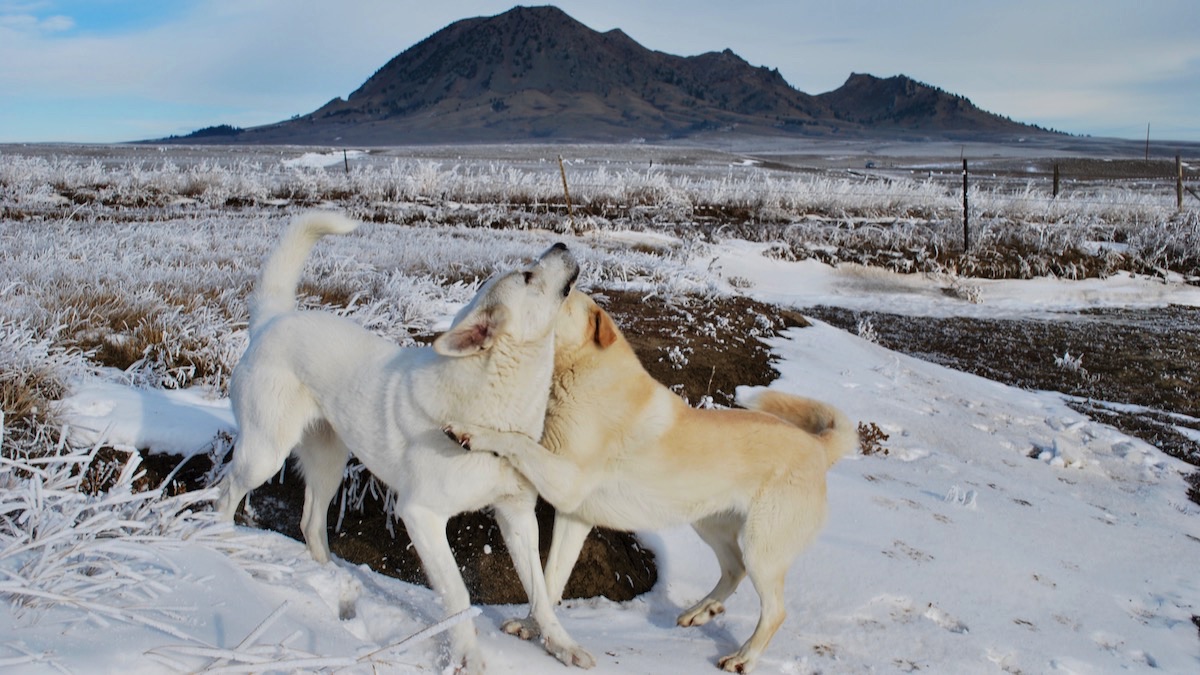


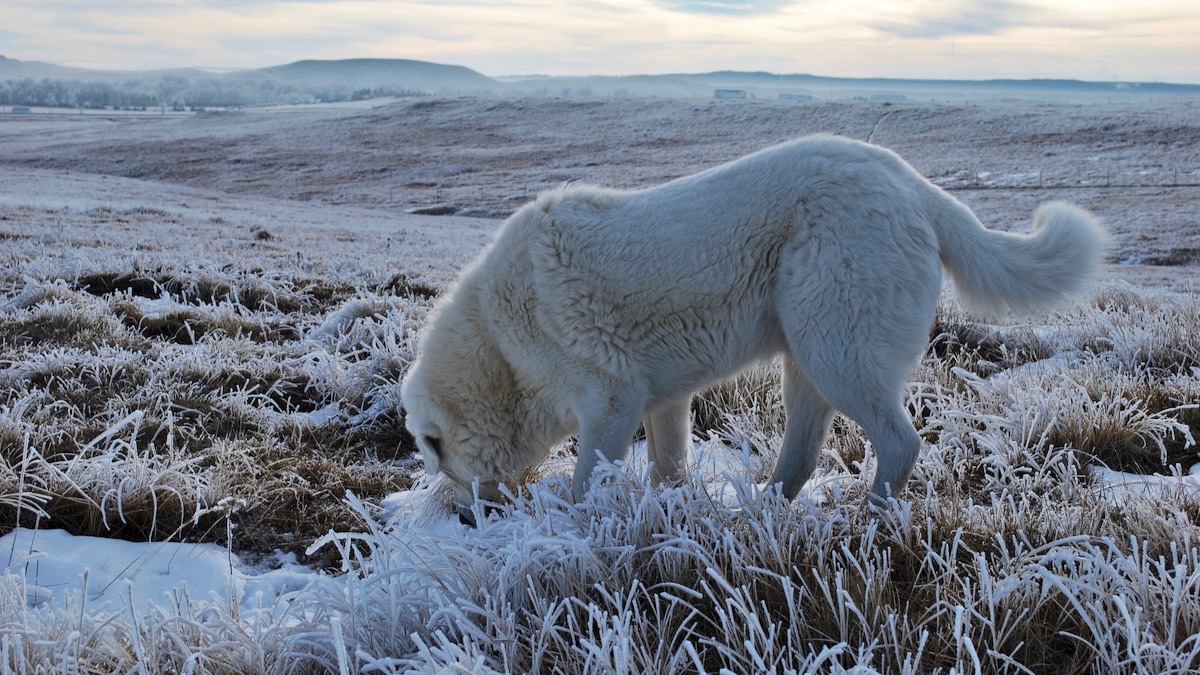

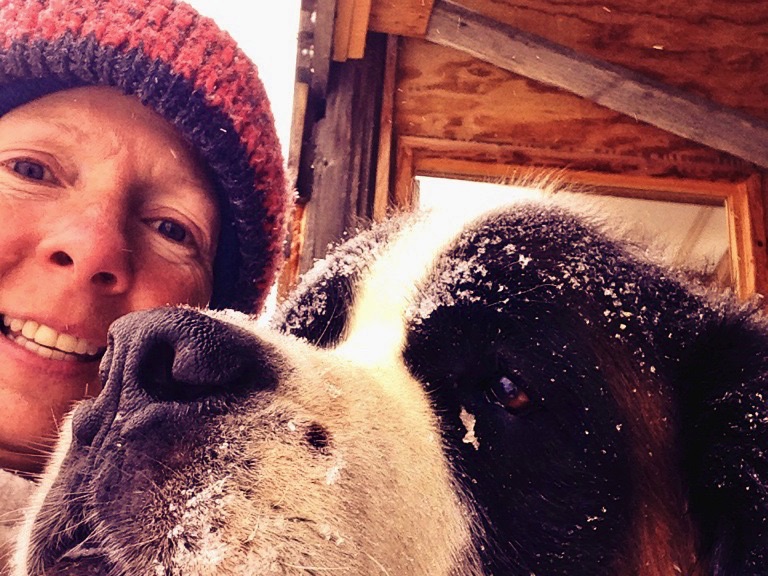
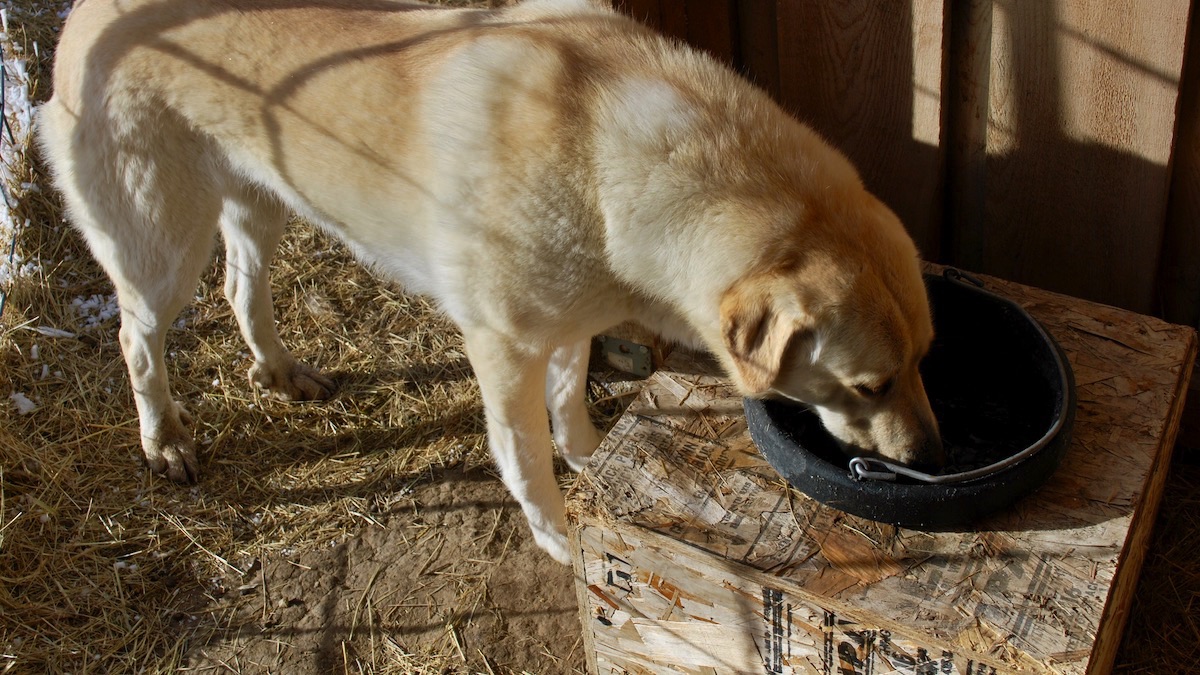
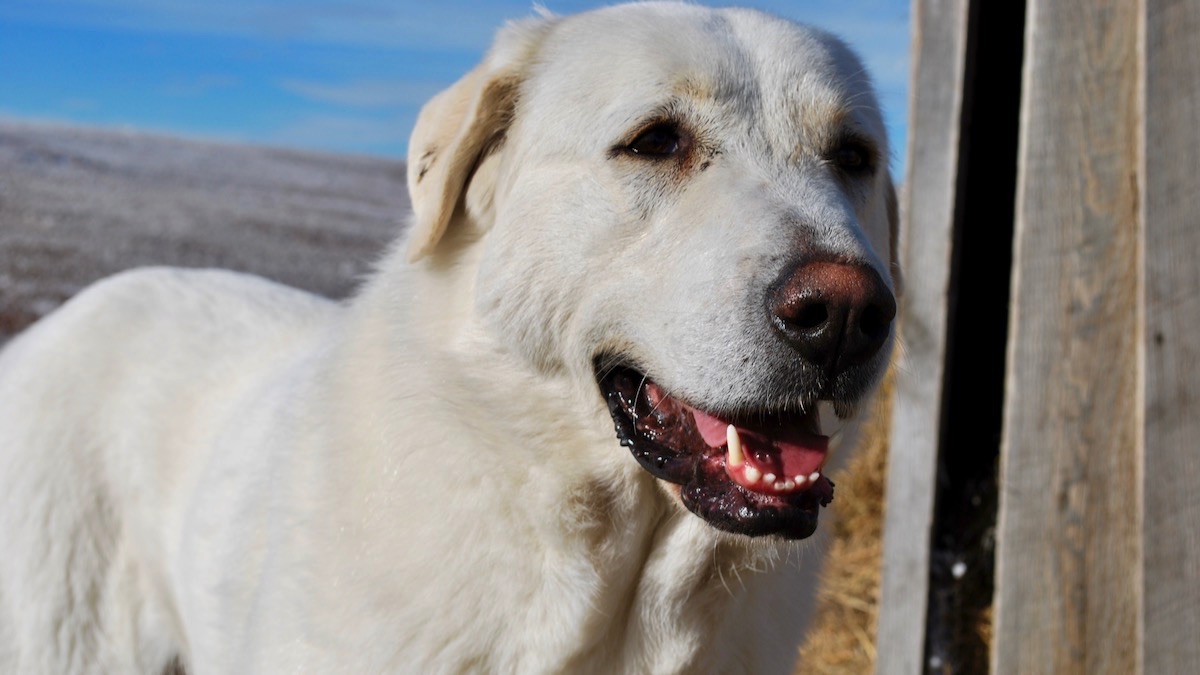
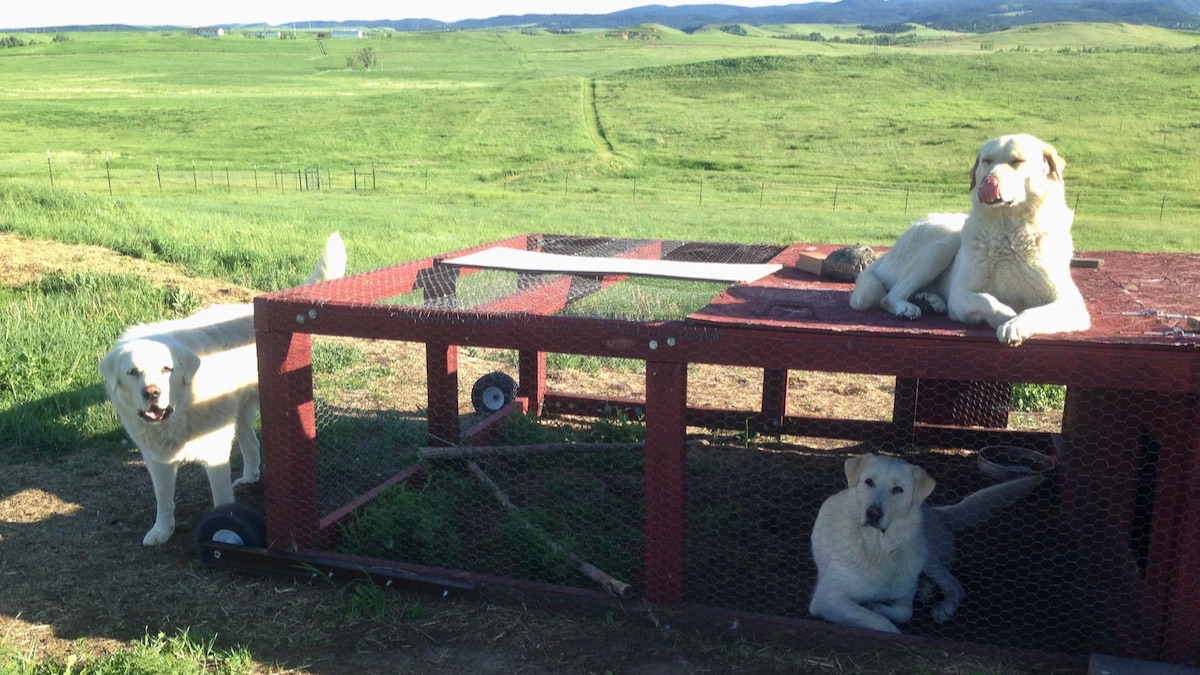
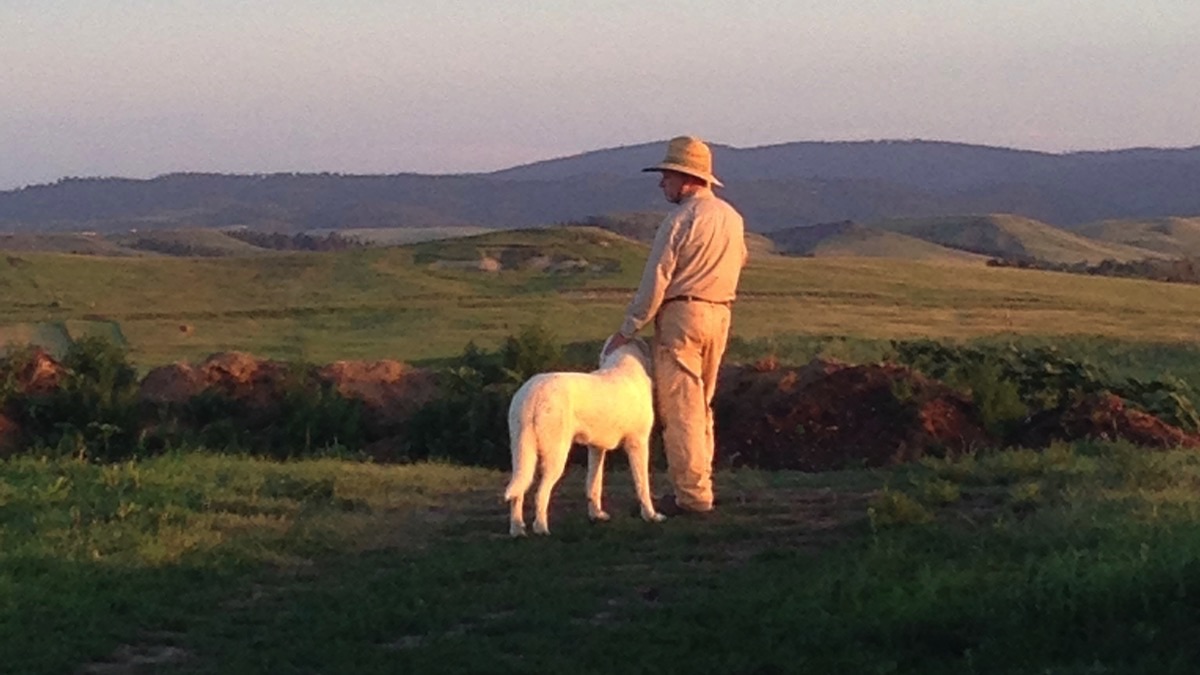
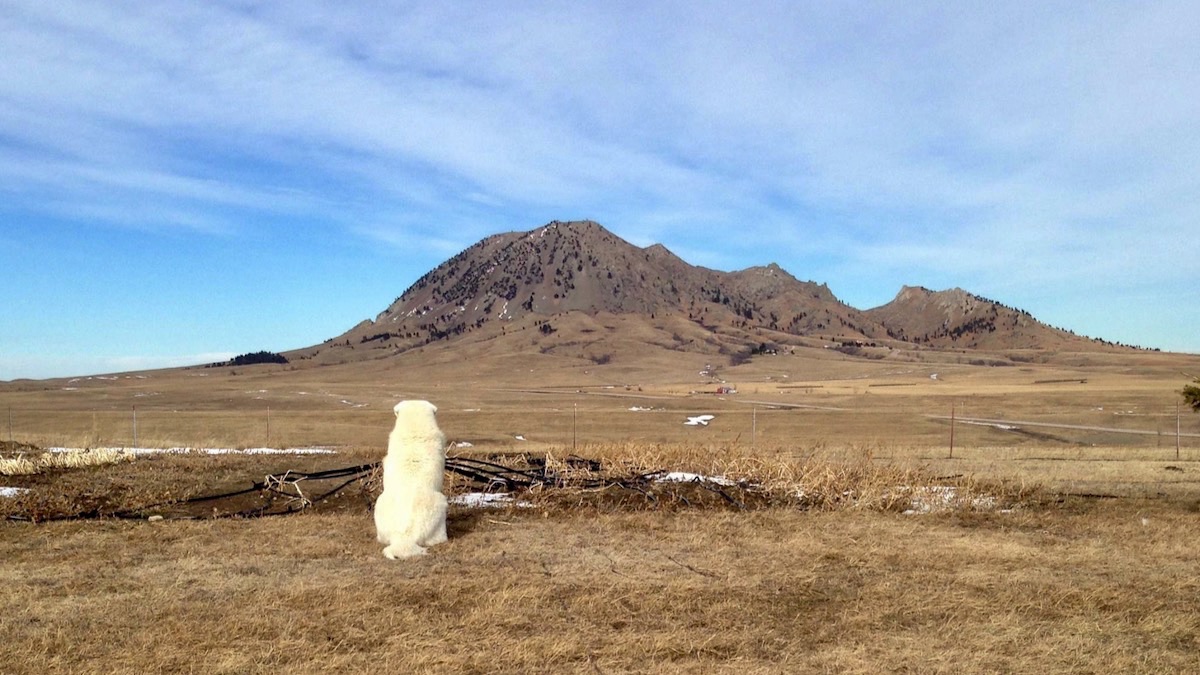


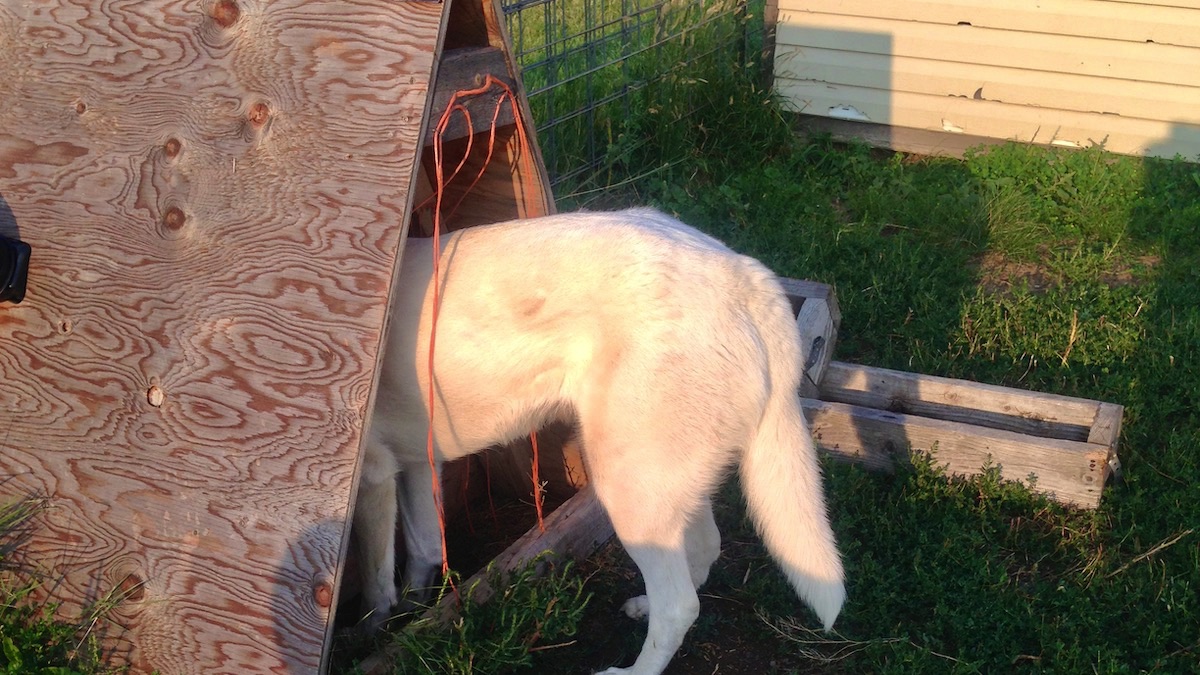
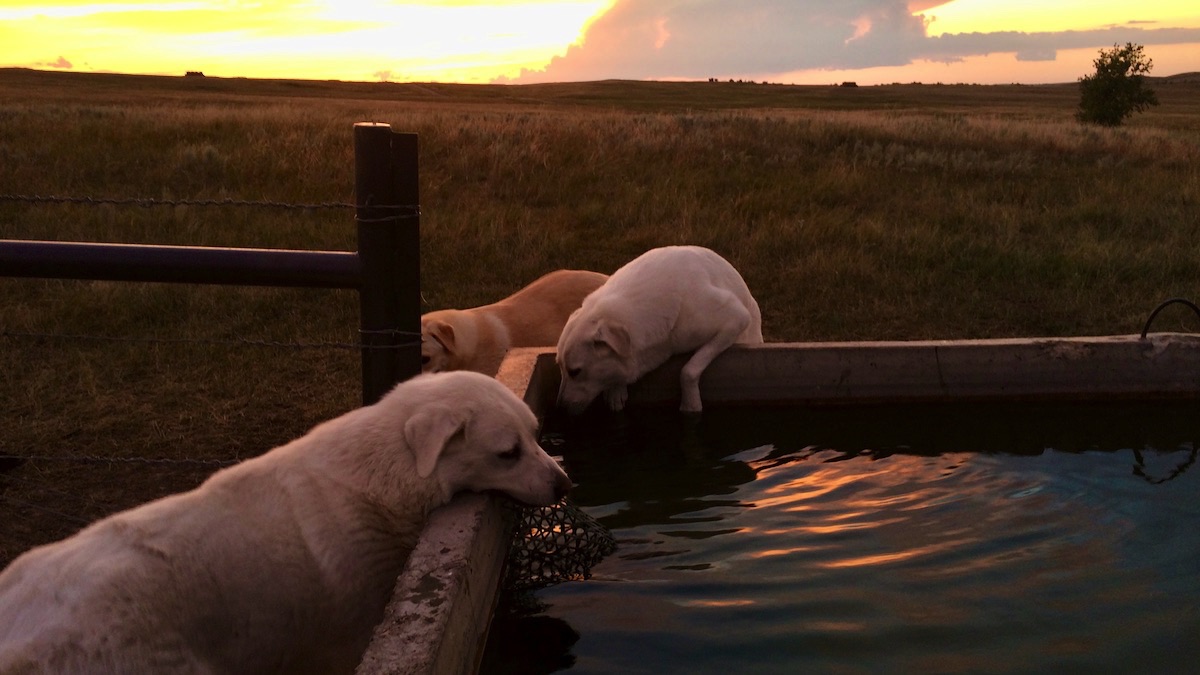
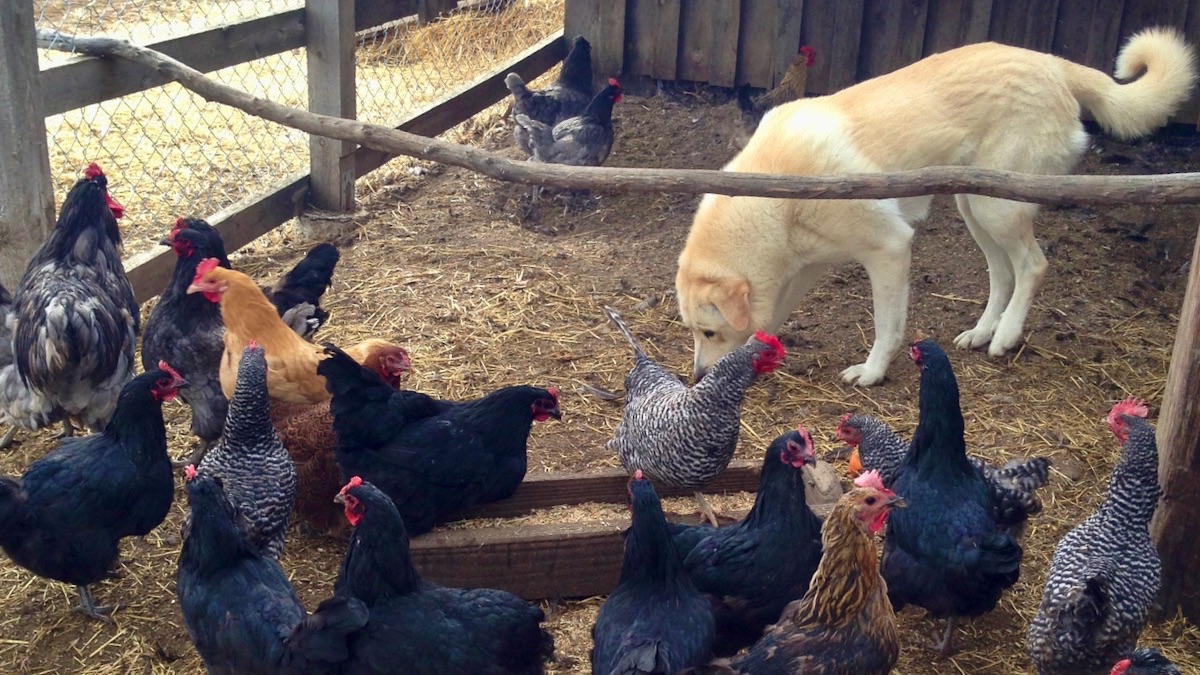
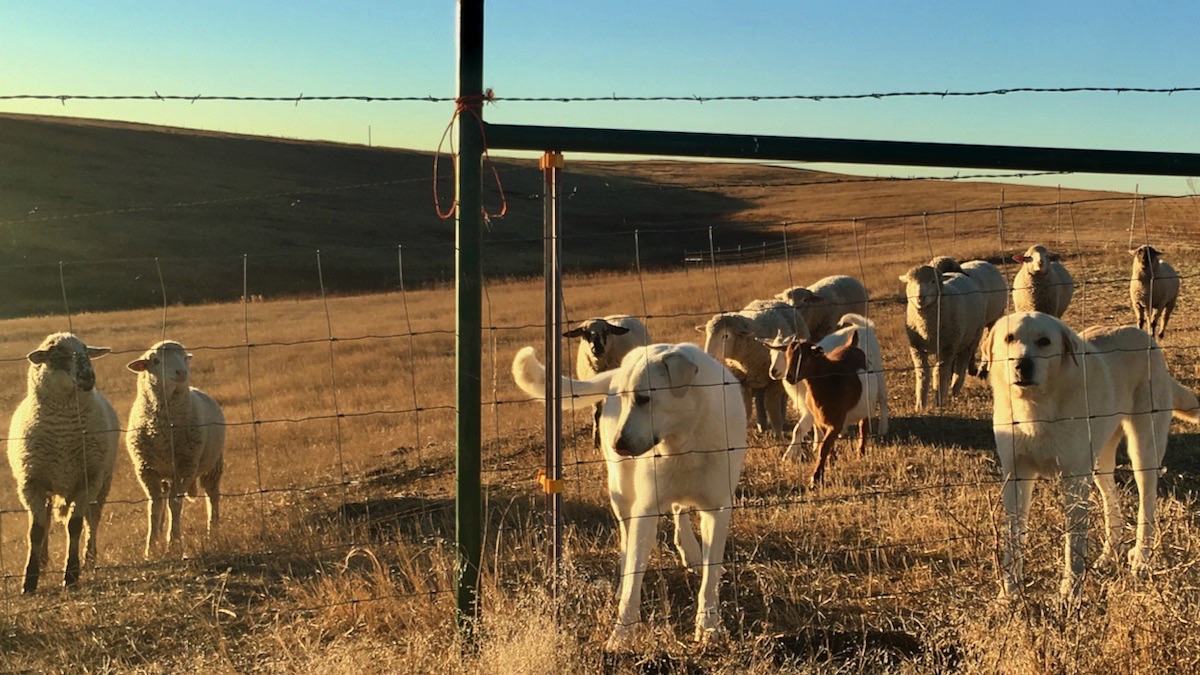
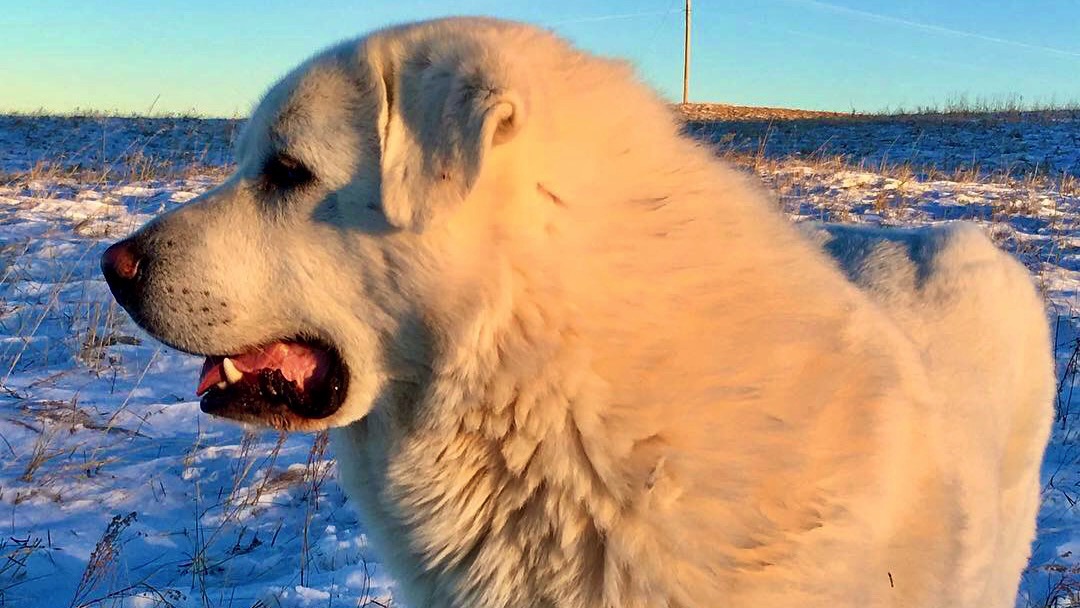

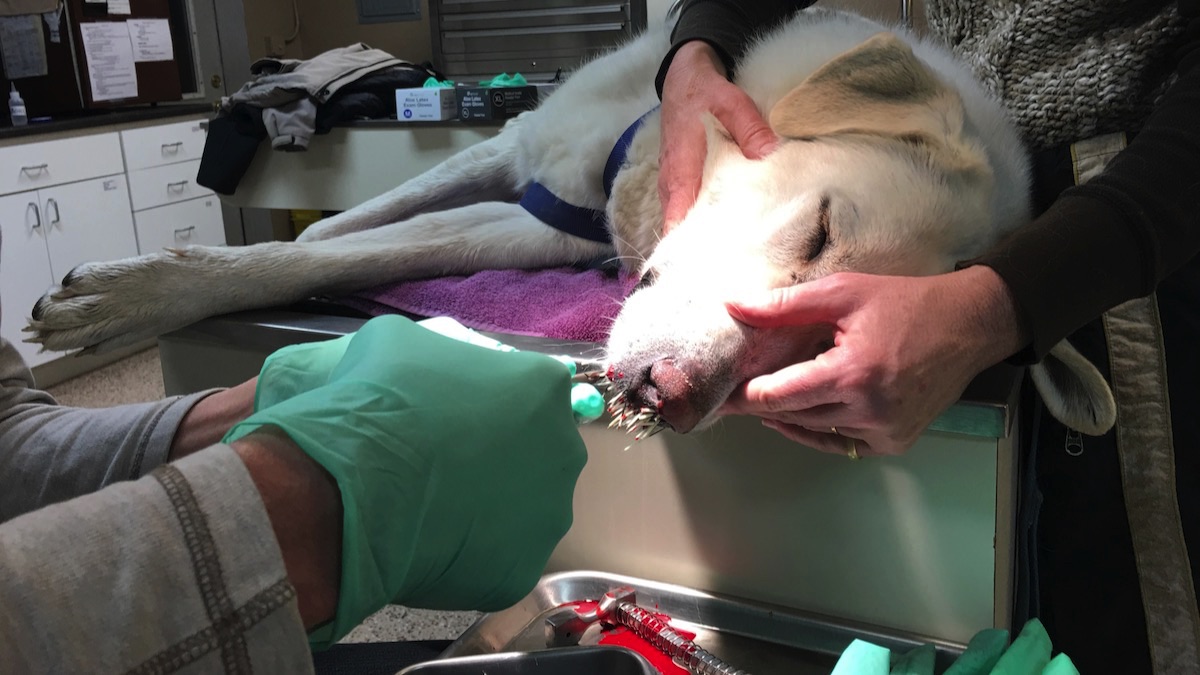
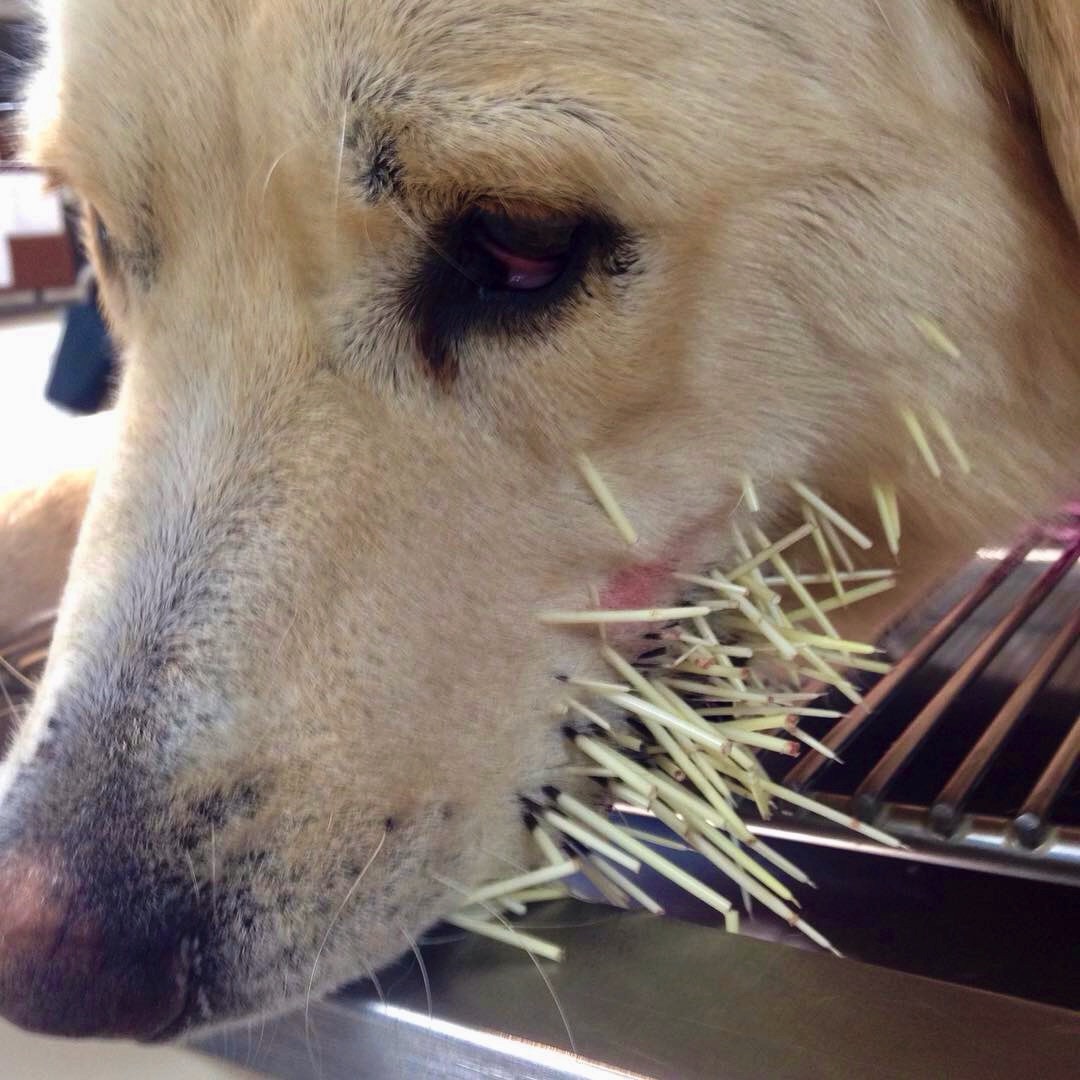
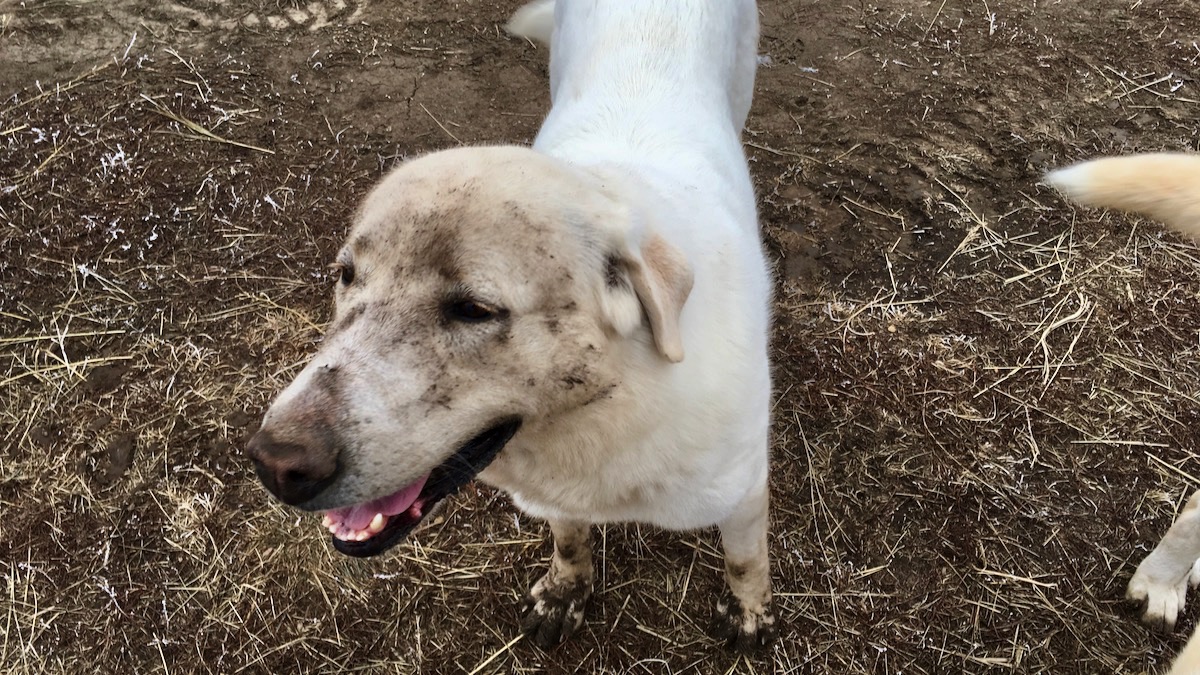
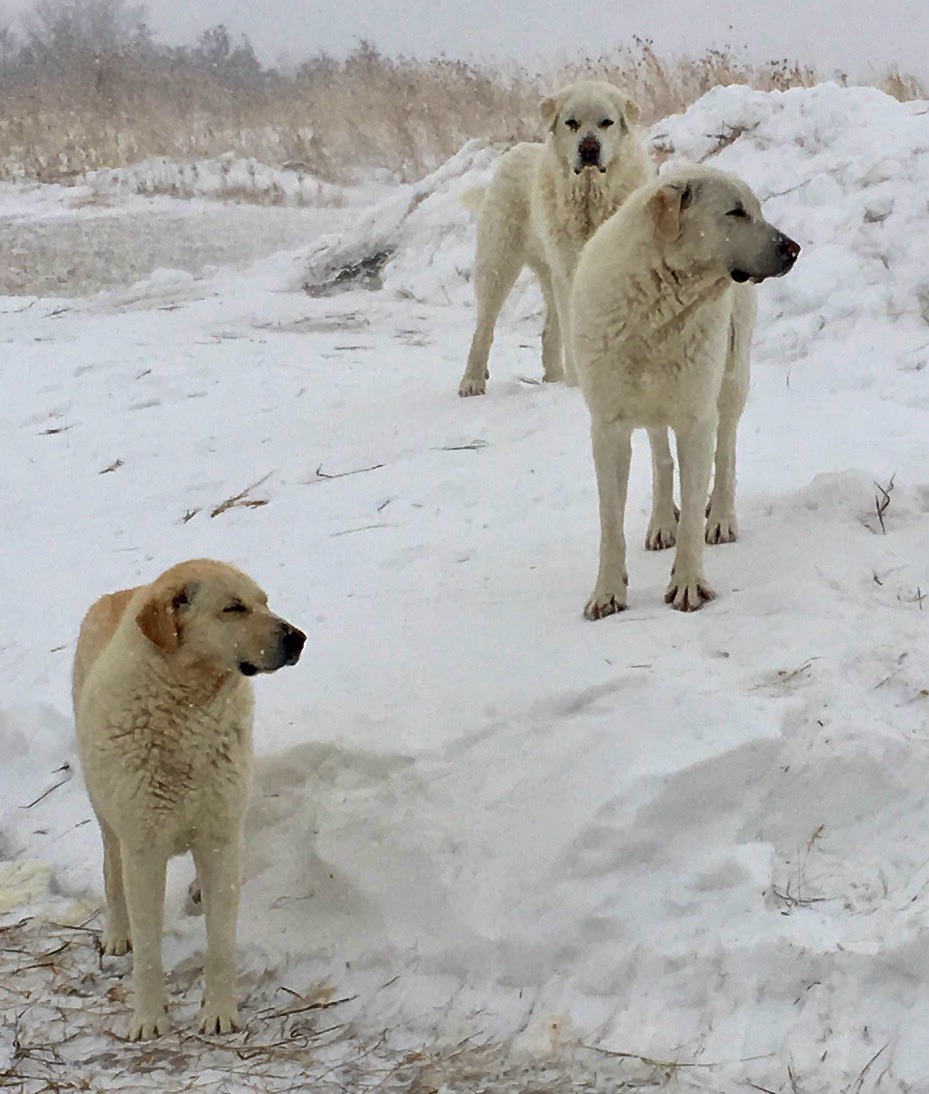
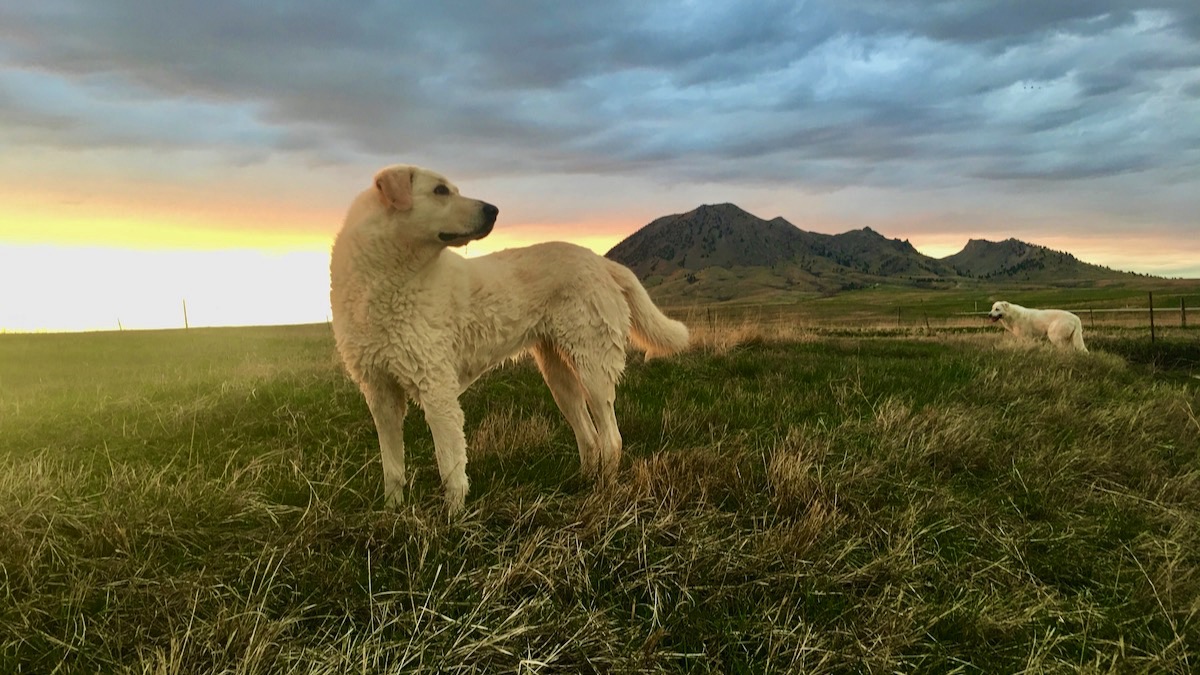
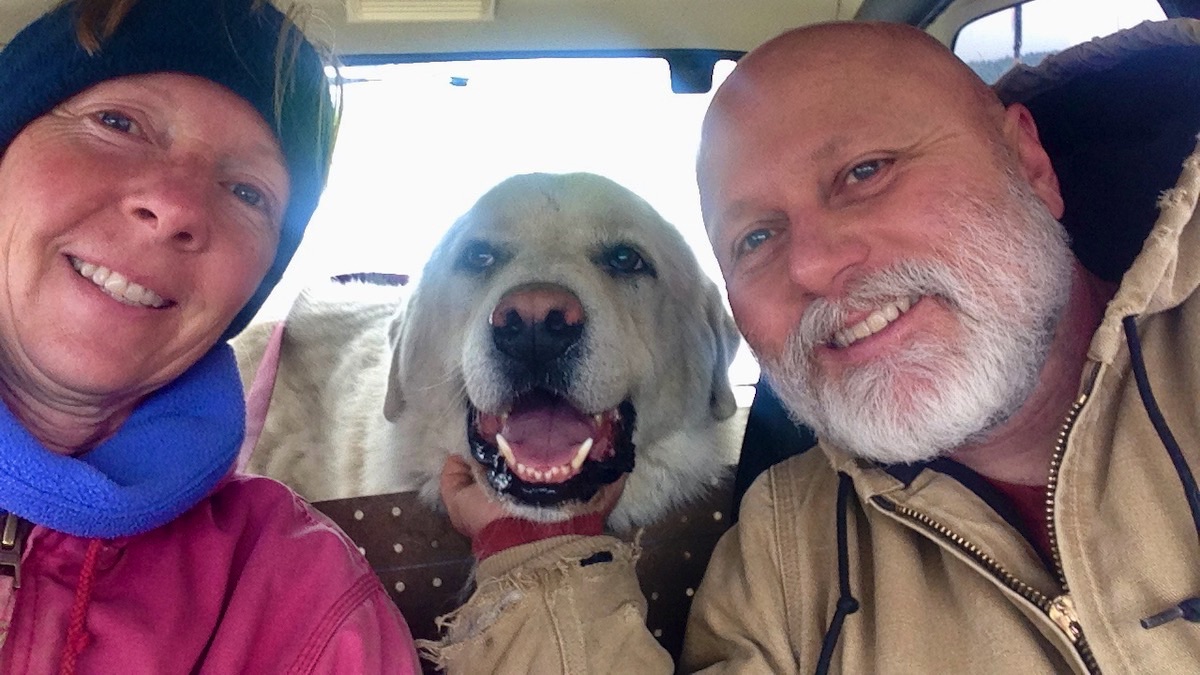
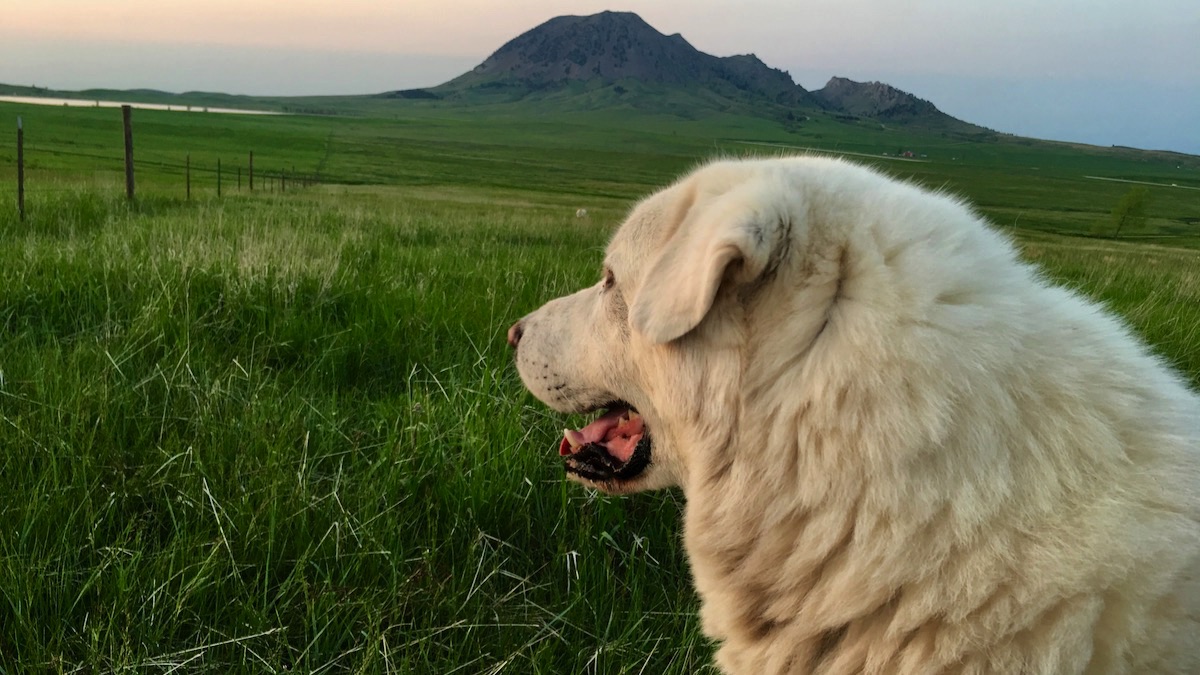

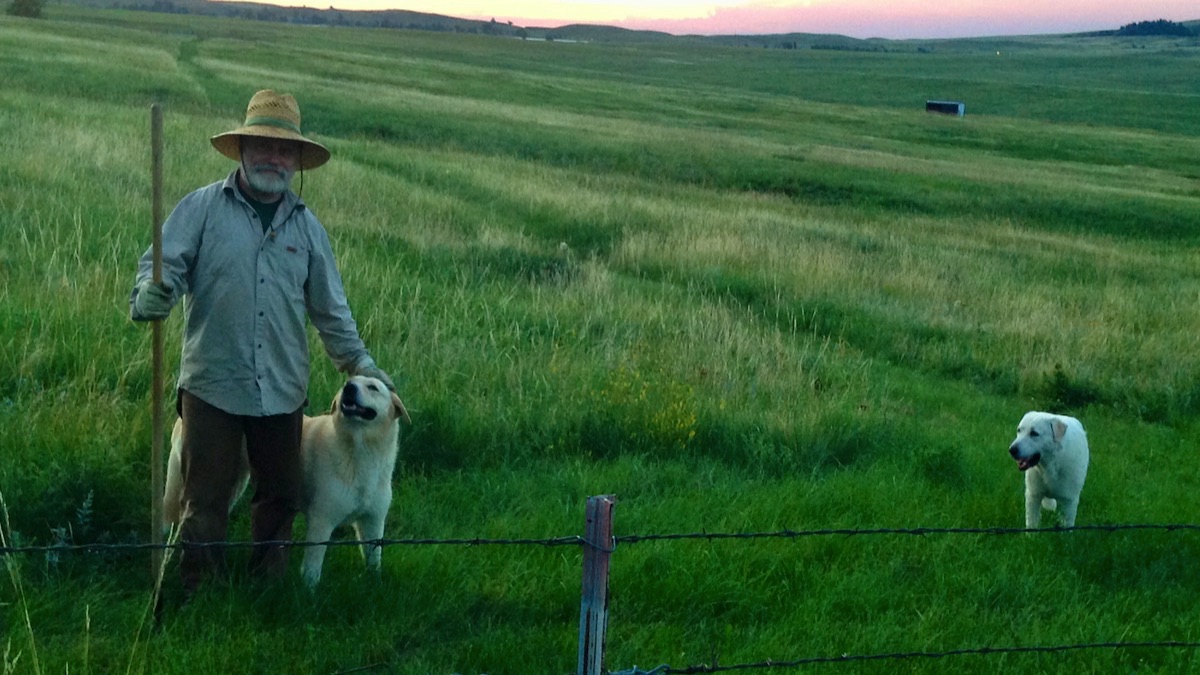

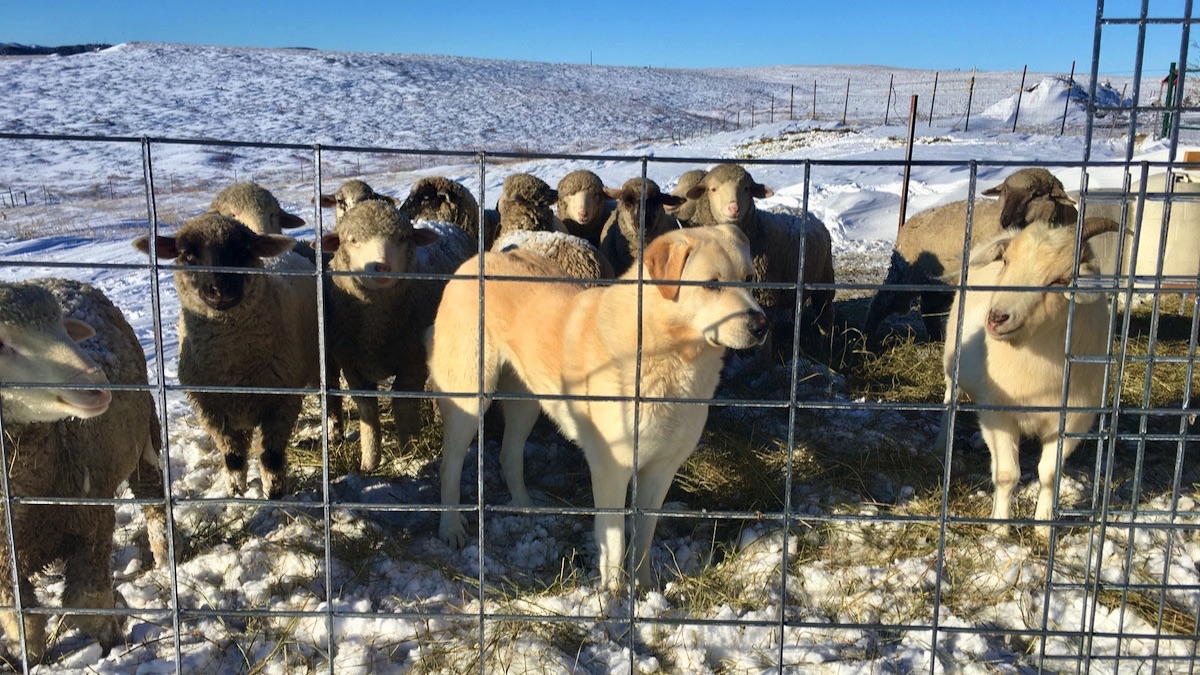
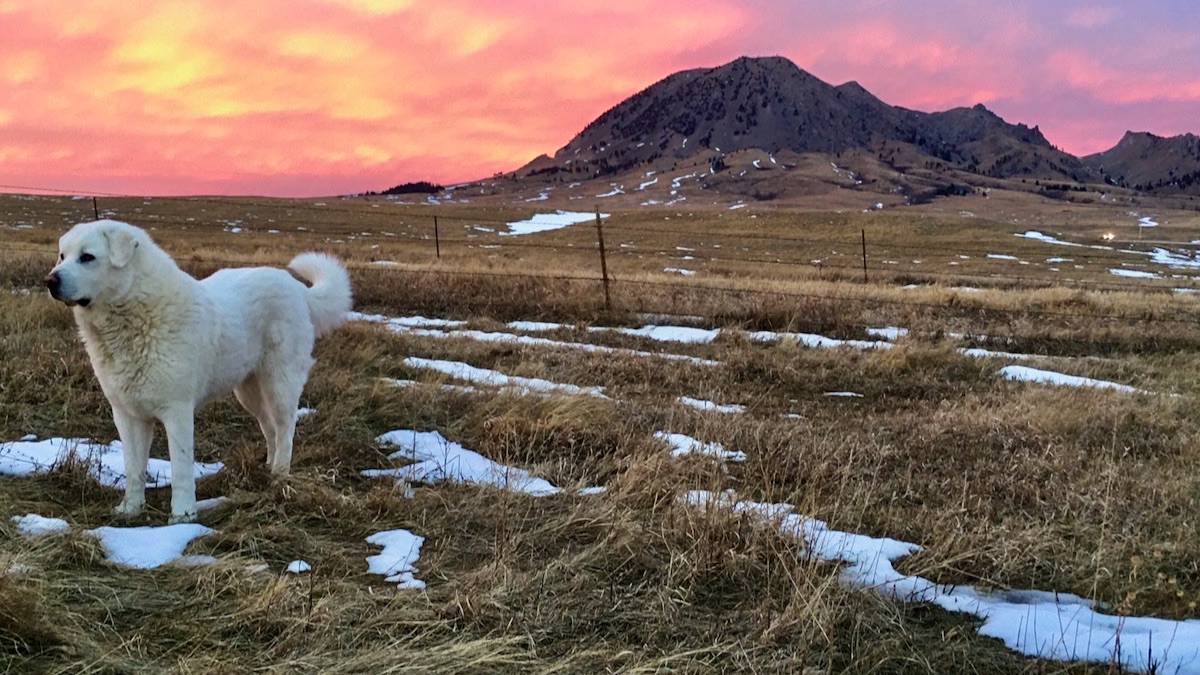
Another Dog Video - but with a warning!
This video may not be suitable for all viewers. This video contains scenes of Livestock Guardian Dogs attacking and killing a large badger.